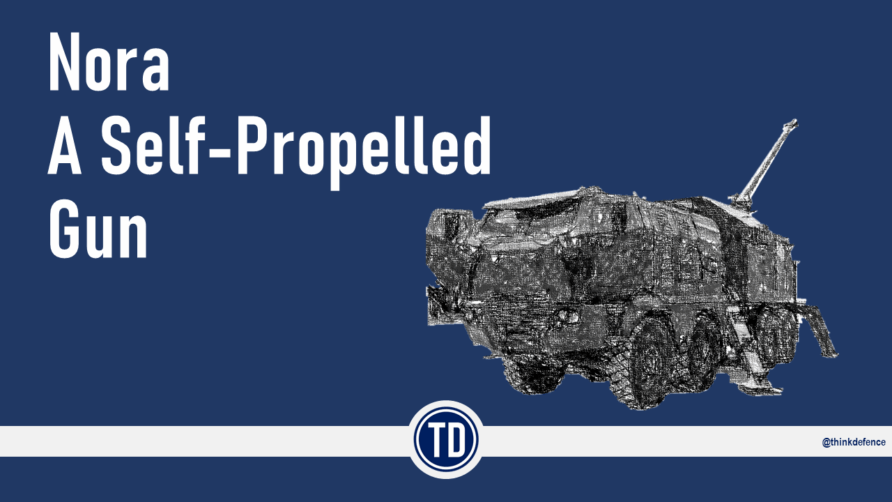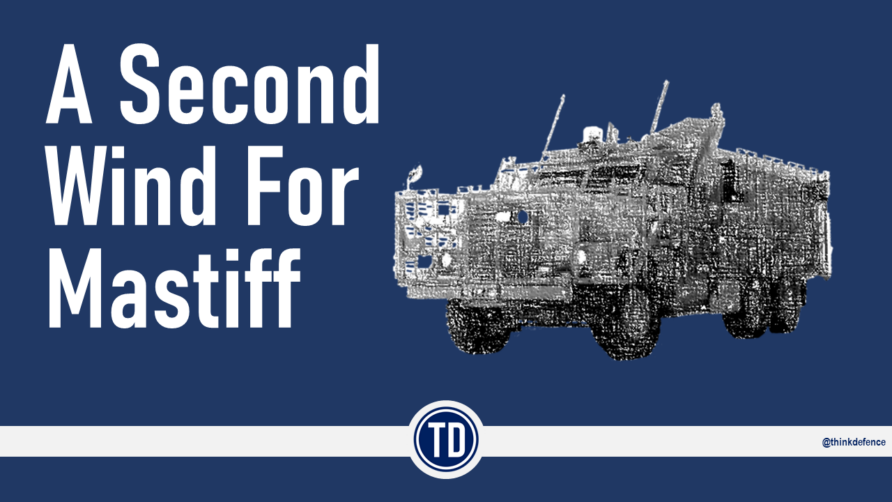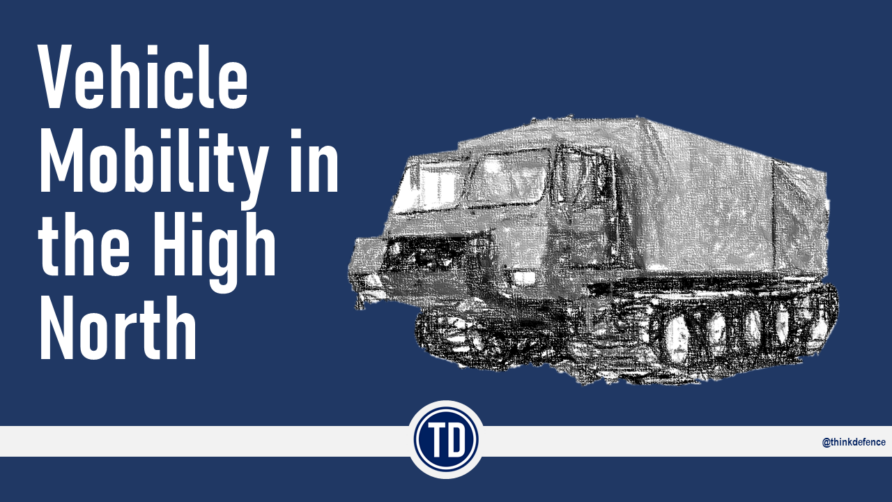The ARTEC Boxer is a wheeled or tracked armoured vehicle, this article describes its capabilities, modules, and variants
Boxer is described by ARTEC as;
BOXER is a truly modular vehicle providing multiple functions for its users, several communication interfaces for participation in network-enabled warfare and diverse mission relevant capabilities. The flexibility of its modularity allows BOXER to be easily adapted to meet diverse mission requirements, in rapidly changing circumstances and global environments. BOXER has impressive integral growth potential so that future emerging military roles and changing requirements can be met, without degrading the vehicle’s capabilities such as mobility.
Boxer is available in several variants.
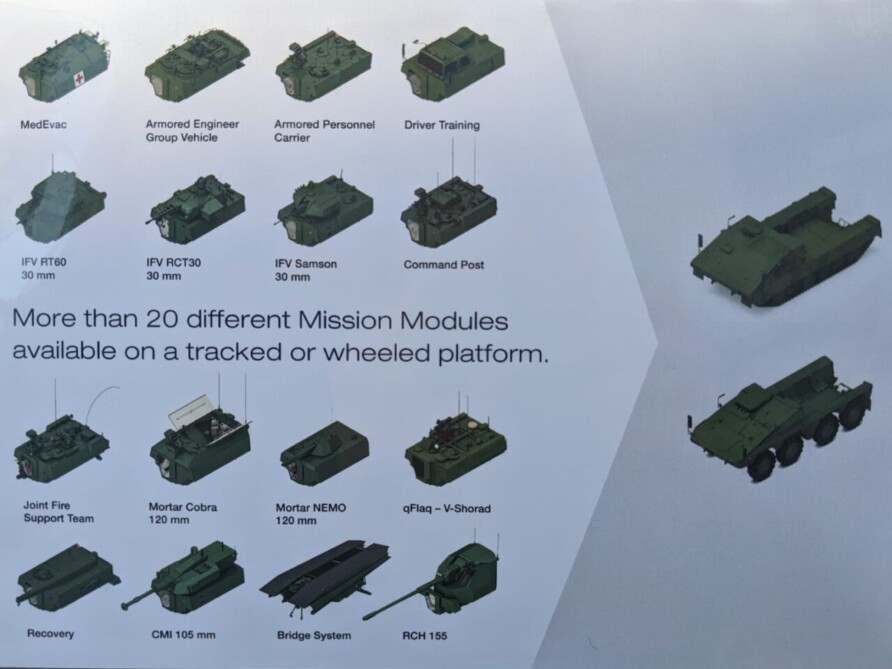
Boxer is produced by ARTEC GmbH (ARmoured vehicle TEChnology) under the overall management of the Organisation for Joint Armament Cooperation (OCCAR). Artec is owned by Krauss-Maffei Wegmann GmbH, Rheinmetall MAN Military Vehicles GmbH (RMMV) and Rheinmetall MAN Military Vehicles Nederland B.V. (formerly Stork). As the UK has now rejoined the Boxer programme, as managed by OCCAR, Artec will produce most of the vehicles and modules in the UK with a value split between RBSL and WFEL (described in Part 1 of this article)
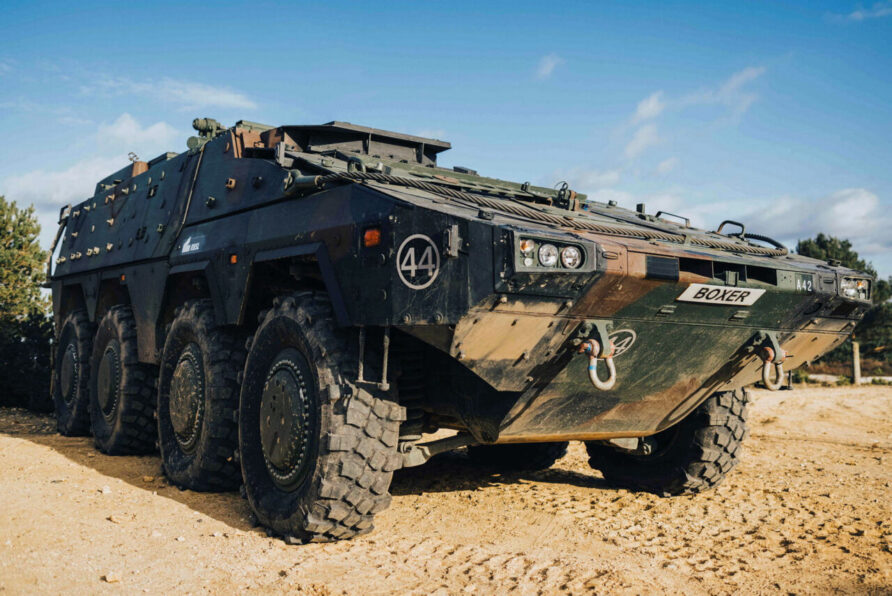
Boxer Drive Module – Wheeled
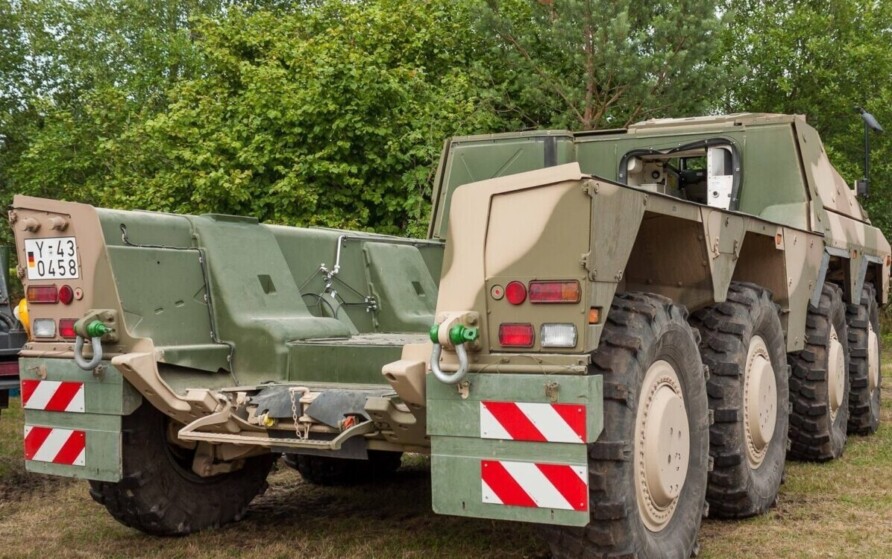
Weights, Dimensions, and Performance
When it was introduced, Boxer was significantly larger than in contemporaries, but recent vehicles have caught up somewhat. The reason for its size (and resultant high weight) was high levels of protection (especially top protection against fragments and cluster weapons) and a desire to ensure sufficient space to accommodate the embarked personnel with their stores rather than hanging things on the outside.
In common with all similar vehicles, its combat weight has crept up since its introduction, with different equipment fits and protection influencing the final weight and dimensions.
| Length (APC) | 7.93m |
| Length (155 mm) | 10.5m |
| Width | 2.99m |
| Height (Hull Roof) | 2.38m |
| Height (Lance Turret Roof) | 3.24m |
| Height (155 mm Turret Roof) | 3.94m |
The maximum gross vehicle weight is 38.5 tonnes, this has increased since first introduced through the A1 and A2 revisions.
Comparing that with transport aircraft dimensions and capacities below.
| Width | Height | Length | Payload | |
| C-130J | 3.12m | 2.74m | 12.1m | 15–16 tonnes |
| C-130J-30 | 3.12m | 2.74m | 17.0m | 15–16 tonnes |
| A400M | 4.00m | 3.85m | 17.0m | 30–32 tonnes |
| C-17 | 5.50m | 3.80m | 26.0m (inc. ramp) | 60–64 tonnes |
Width and length are no problem for all those above but a Boxer complete with both drive and payload module would be too heavy for a C-130 and at the upper end of the weight, marginal at best for the A400M.
Although A400M has a ‘brochure’ maximum payload of 37 tonnes the actual useable maximum weight will likely be less and in any case, towards the top end of the payload, the range would be restricted.
The maximum vehicle weight includes fuel, ammunition and other items that could often be removed for flight, but it is hardly ideal and in general, compromises would need to be considered if the Boxer is likely to be transported by air.
The C-17 could easily carry one at substantial distances although, for both, the 155 mm artillery variant will be challenging regarding height. The Air Portable Ferry Bridge has an MLC of 35 so would be unsuitable for Boxer, a variant. With an MLC of 50, the Rapidly Emplaced Bridge System (REBS) would be suitable.
As weight has grown, transportability by air has been affected. Although the UK’s A400M’s have a stronger floor (to accept Terrier) than standard A400M’s, recent German trials have confirmed that the A2 variant will need to be carried on A400M in a split configuration, drive unit and module in separate aircraft, it is planned that three A400M will be able to accommodate two Boxer.
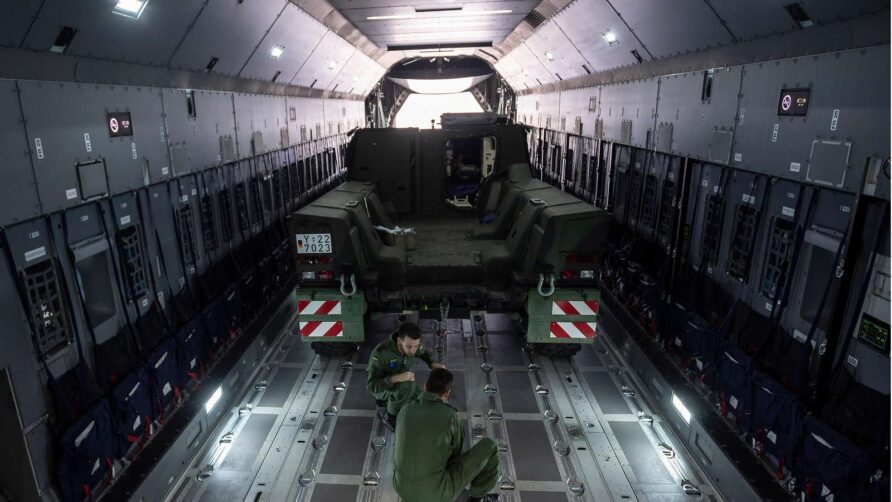
This will restrict air landing operations and place a greater demand on finite transport but perhaps this can be offset by a likely infrequent deployment by air.
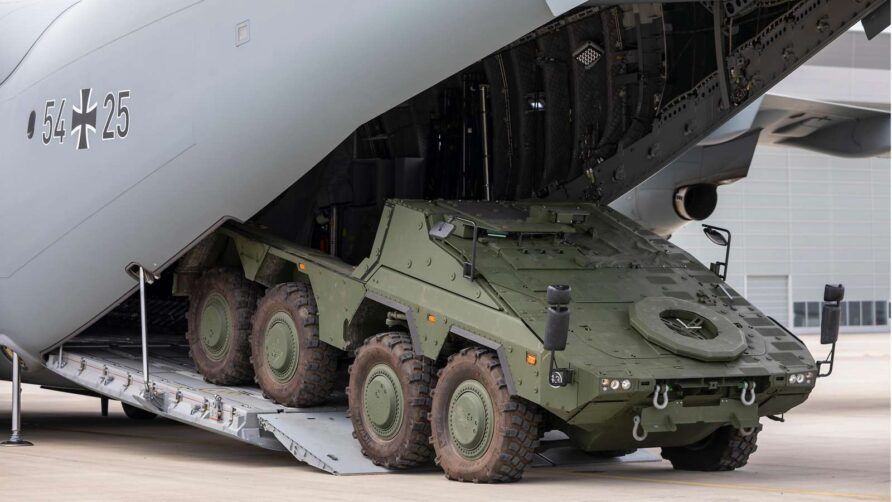
The Trench crossing is 2m, step climbing 800 mm, gradient 60%, side slope 30%, and it has a ground clearance of 500 mm. Mobility is reported to be excellent with all wheels being driven, the front two axles steering with selectable four-axle differentials and two inter-axle differentials.
A central tyre inflation system is fitted to enhance mobility.
The Dutch/Germans use Michelin 415/80R685 XML tyres (27 inches (0.69 m) in metric) which are ‘tuned’ to give maximum soft soil (mud) traction, but only carry 4.5T per tyre. Block 1 of Australian Boxers will be fitted with 415/80R685 XForce 2 tyres (higher load rating @5T and sand-optimised) and Block 2 (and all future Boxers for Australia) will be fitted with 415/80R685 XForce ZL tyres (even higher load rating @5.6T allowing further growth potential and all-round off-road pattern).
Future Boxers are likely to be heavier than the initial Dutch and German vehicles, so they are likely to be fitted with the XForce ZL tyre.
None of this negates the need for a recovery variant, as the video below demonstrates
The driver position has a fully protected hatch with integral vision equipment.
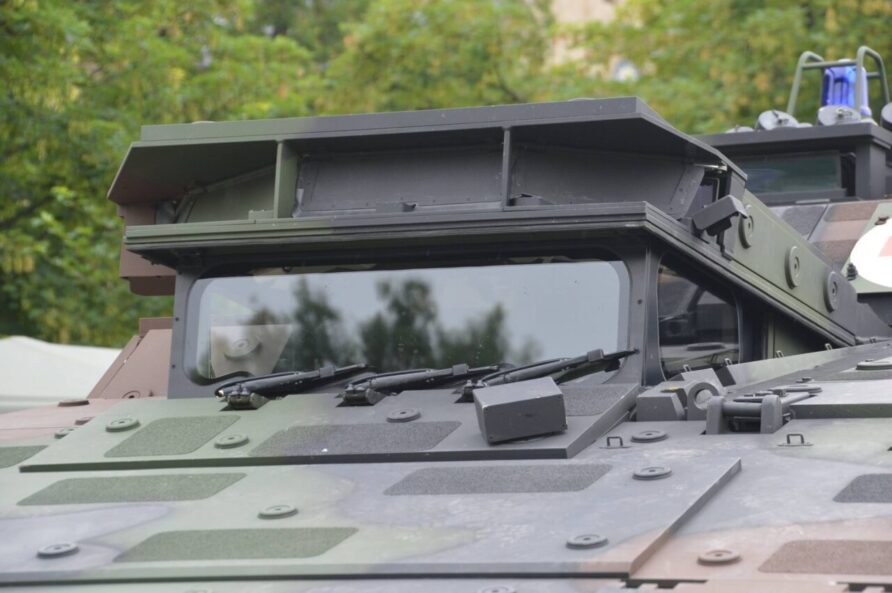
Automotive and Capacities
Boxer is fitted with an MTU/Rolls-Royce 8V199 TE20 multifuel engine, based on the Mercedes-Benz Series OM500 truck engine, developing 536kW (720bhp) coupled to a 7 forward 3 reverse speed Allison HD4070 automatic transmission. The Euro III-compliant Series 199 has a two-stage intercooler and has been optimised for military use with modifications to the lubrication system, turbocharging system and electronics.
To reduce thermal signature, the hot exhaust is discharged together with the cooling air via thermally insulated ducts.
The engine series is the same one that powers Ajax. Pack change can be completed in less than 30 minutes.
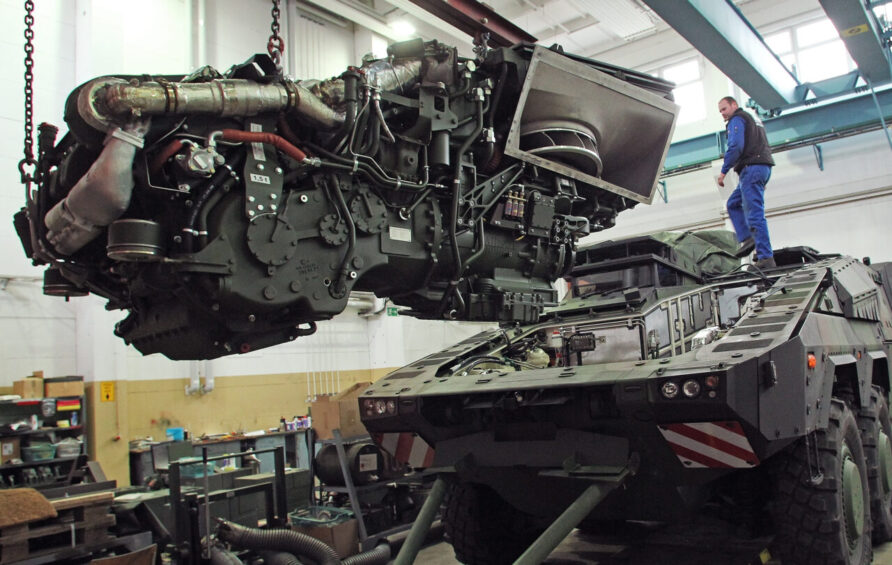
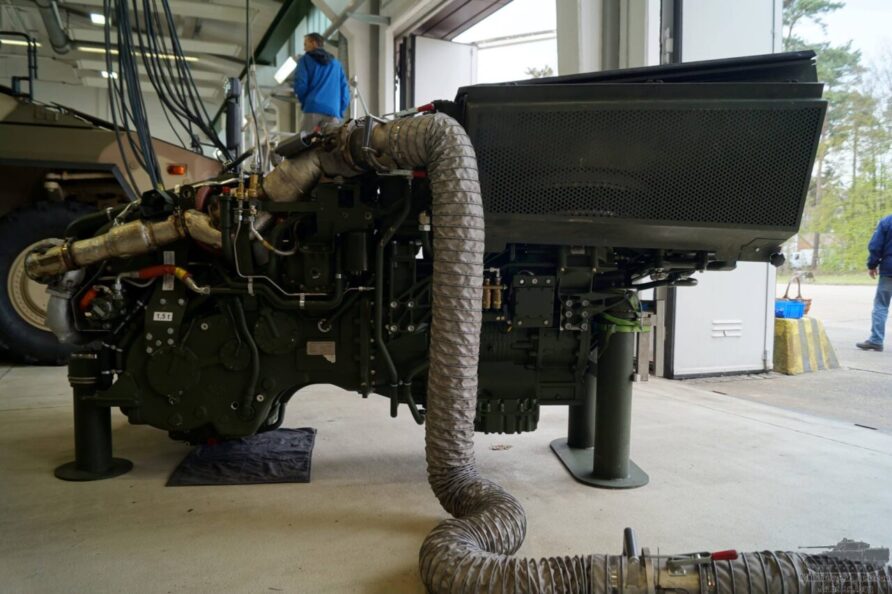
Its maximum speed is 103 km/h with a road range of 1,050 km to support longer self-deployments.
The suspension arrangement is shown below.
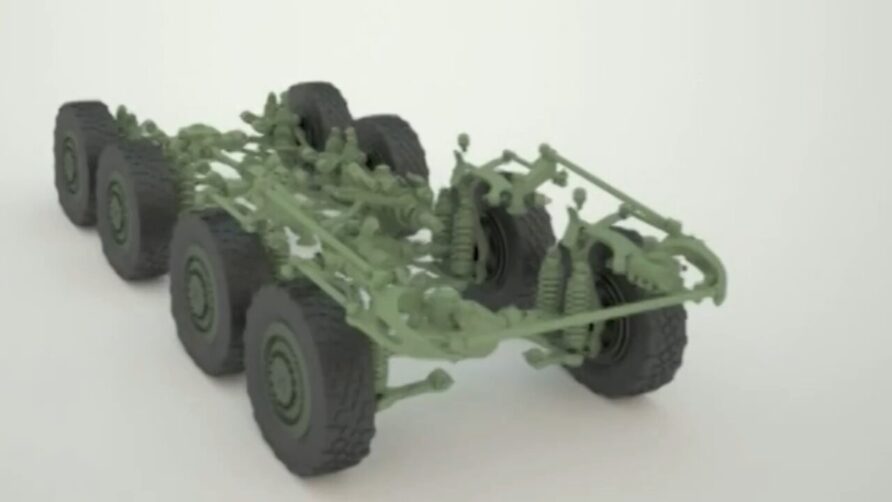
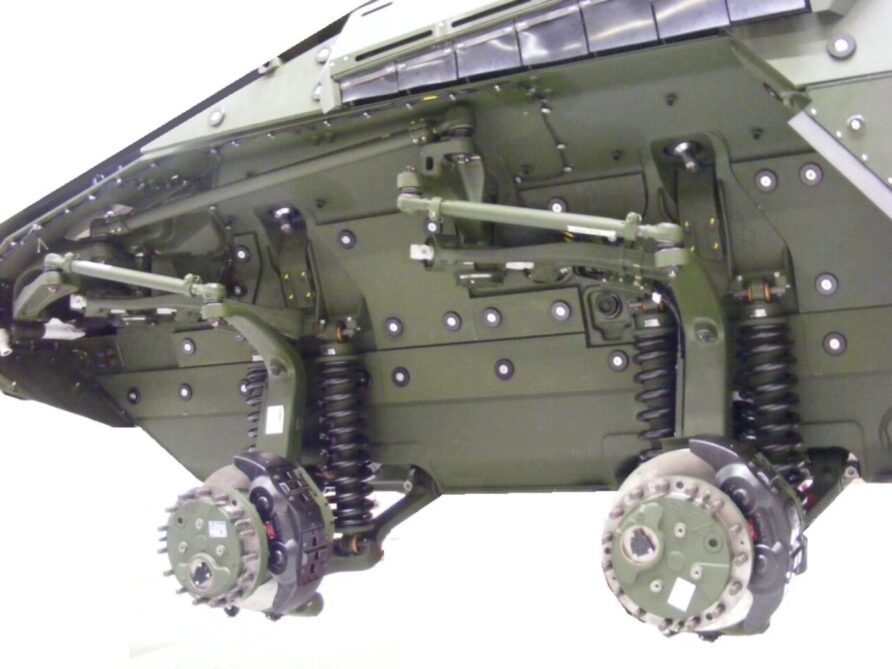
Boxer Drive Module — Tracked
KMW recently revealed a concept of a tracked drive module.
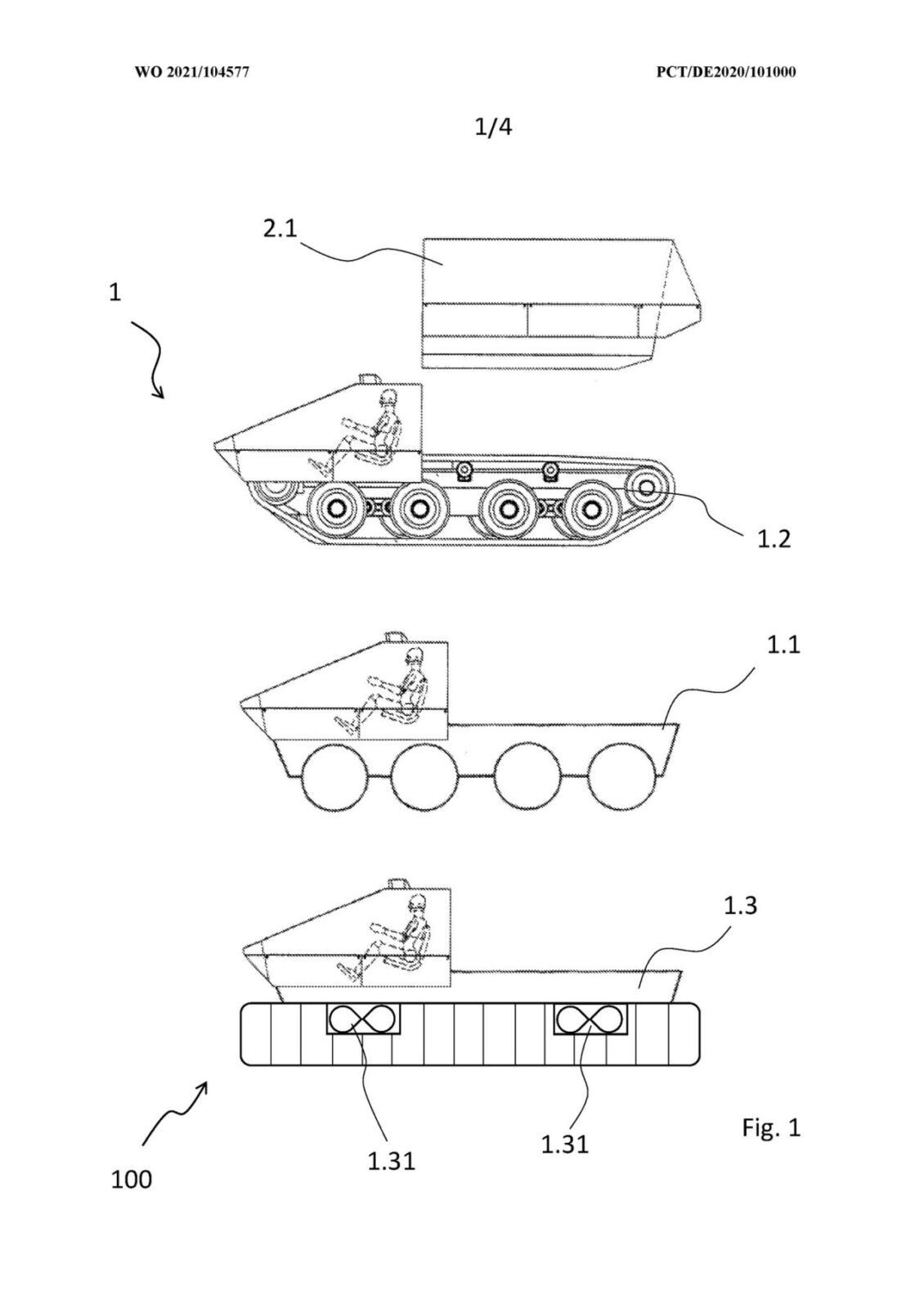
First shown in 2022. the tracked drive module is larger than the wheeled version but can use any of the mission modules
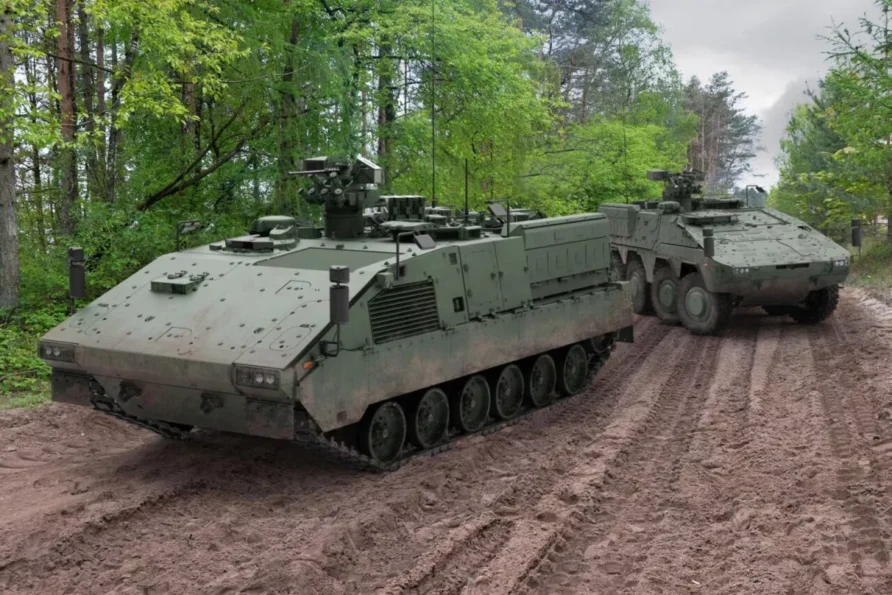
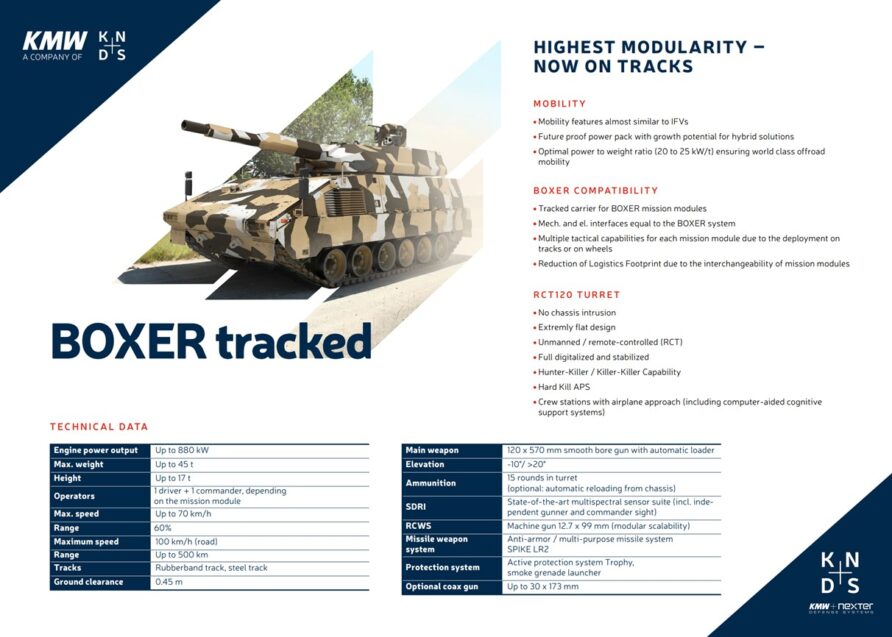
Boxer Protection
The vehicle is constructed from welded steel armour and with an AMAP composite armour provides baseline protection of STANAG 4569 Level 4 all-around (resistant against 14.5 mm armour-piercing, 155 mm artillery shell splinters at 30m and 10 kg mine). Crew areas are also provided with an AMAP-L spall liner. Blast attenuating seats are also fitted as standard.
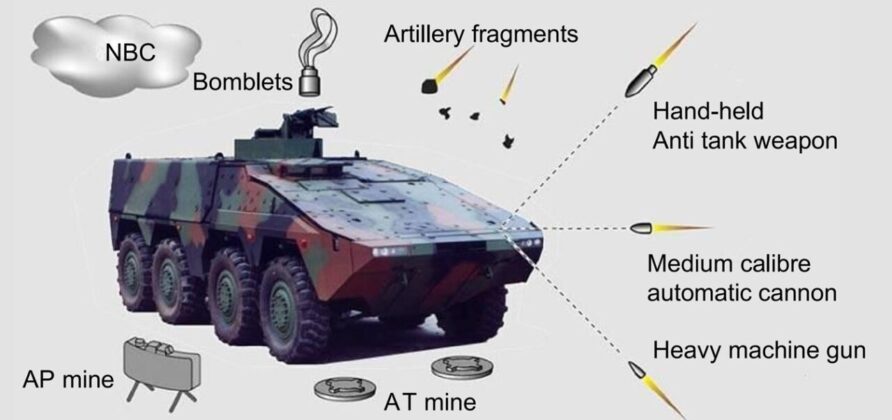
Reduction of thermal, acoustic, and radar signature is core to the design, actively cooled plates around the engine compartment, exhaust vent placement and triple-layer floors for example. Hydraulic liquids and fuel are placed outside the main mission modules, and a full CBRN protection system is fitted as standard.
Additional passive and active protection systems can be fitted. The Australian specification, for example, called for very high protection levels, STANAG 4569 level 6/6+. For the Australian vehicles, based on the A2 configuration, the local situational awareness system will be provided by Tectonica
Rheinmetall has demonstrated the Boxer CRV with the ADS – Gesellschaft für aktive Schutzsysteme active defence system called AMAP-ADS and several countermeasures. ADS appears to be a very impressive system, now renamed Strike Shield by Rheinmetall, but it remains to be seen how it will compare with other comparable systems with trainable submunition launchers.
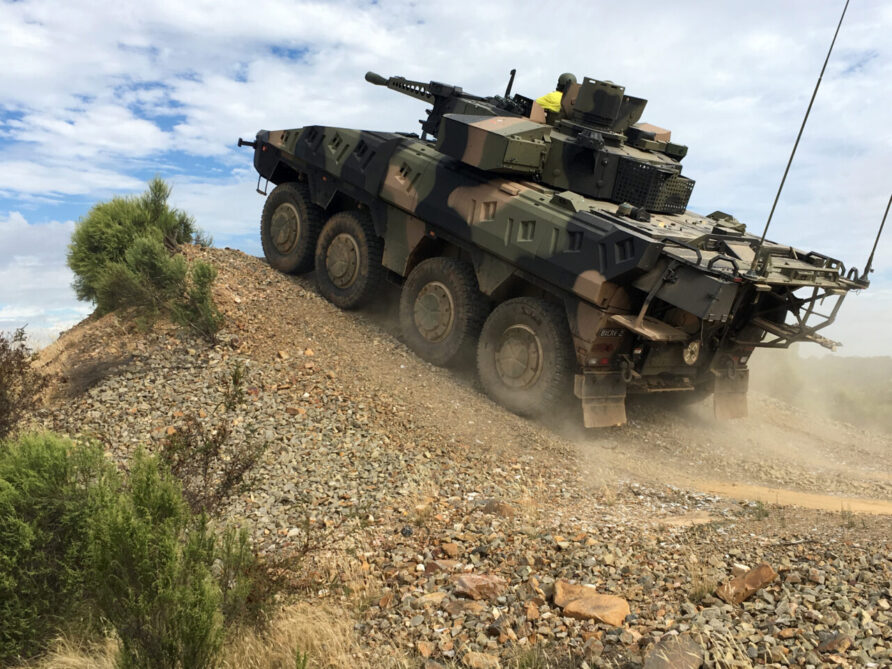
The UK is currently evaluating a number of active protection systems so it will be interesting to see if any are selected for Ajax, MIV or Challenger 2, and it is likely that the comprehensive work completed for Ajax and Generic Vehicle Architecture will find its way into MIV at some stage. Certainly, UK Boxers will have excellent protection.
Some armour kits for UK Boxers will be provided by EODH Protection

Modularity
The modularity of Boxer is both unique and widely misunderstood.
A Boxer vehicle generally consists of two components, the Drive Module, common to all variants and roles, and the Mission Module.
This modular concept was integral to harmonised MRAV/GTK/VBM requirements when Boxer was accepted by the UK, Germany and France as a means of maximising commonality to drive down through-life costs, AND, meet national requirements for roles and variants whilst supporting national industry partners.
Modularity adds parasitic weight and in some cases, might restrict weight distribution, but it is at the core of the Boxer concept and has advantages in several areas.
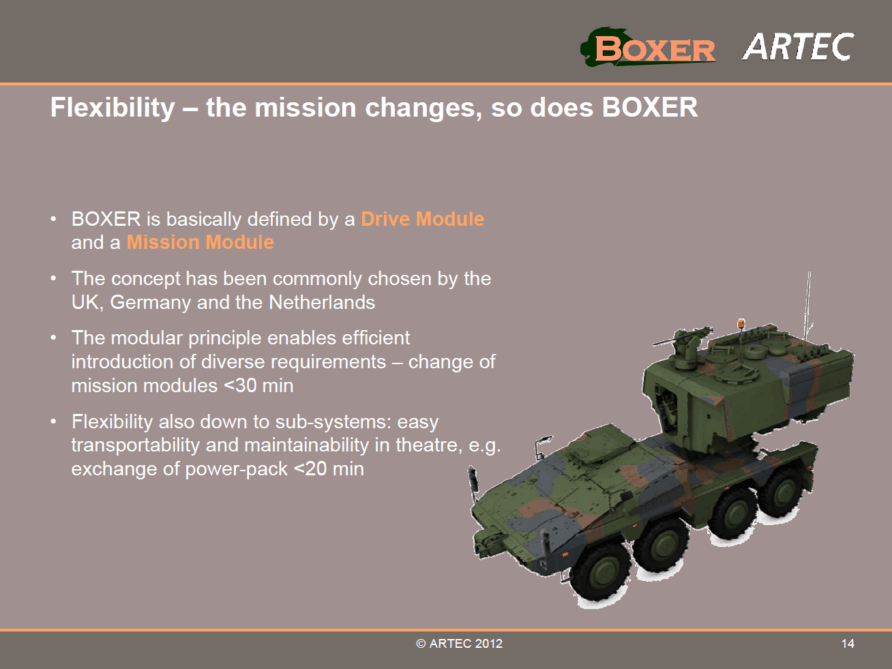
The Drive Module contains the power pack, suspension and driveline, fuel system, electrics, driver station, CBRN and fire detection/extinguishing system and rear ramp equipment (described above)
The Drive and Mission Modules will have different costs but for some of the more expensive modules, turreted or command, for example, the differential is significant.
The Drive Model contains wearing parts, the engine, pumps, suspension, and components that are subject to regular maintenance, wear, and damage just from driving around, let alone arduous driving or battle damage.
So when the Drive Module needs to be taken off the road for maintenance or repair, with a conventional vehicle, the ‘payload’ is also taken off the road. Inspections, changing a fuel filter or carrying out a repair means downtime for the costly parts of the overall package.
With a modular approach, getting the expensive modules back into service when the cheaper Drive Module is out of action is simply a case of swapping the module onto a serviceable Drive Module. In theatre technical reserves can be optimised, reducing the overall logistics demand.It is this cost differential and ability to swap modules that can potentially drive overall capital and operating costs down by improving fleet availability.
Modelling would allow the optimum number of drive and mission modules to be obtained.
For a specific deployment, the force package can be tailored from a large pool of modules.
Modules can be changed within 30 minutes as per the video below, using suitable cranes
Cranes tend to have relatively limited availability so simple lifting jacks can also be used.
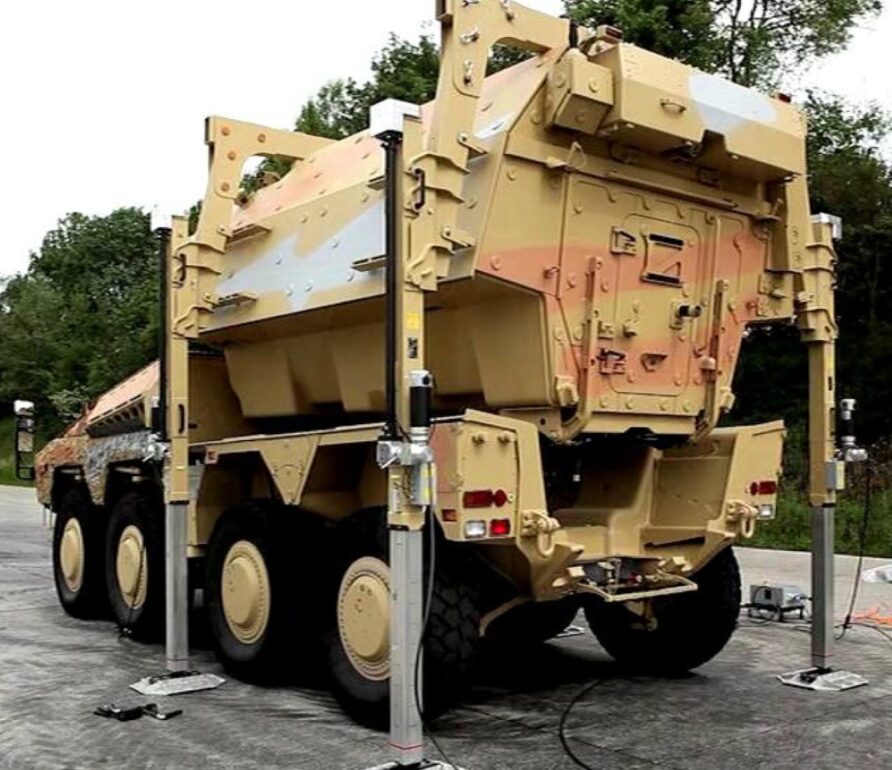
Rheinmetall has also designed a produced a lifting frame called Scorpion
At first glance, Scorpion offers little over and above a crane, but it is demountable using a DROP/EPLS type hook lift which provides additional flexibility and alternatives for transport/
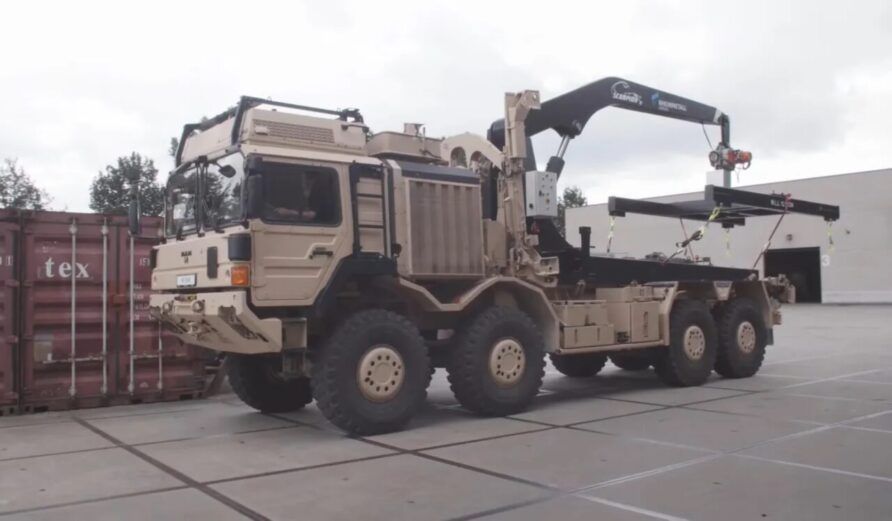
Mission Modules can also be transported separately and for the heavier variants, the ability to split and transport separately allows aircraft loading to be tailored using different transport aircraft, military and civilian.
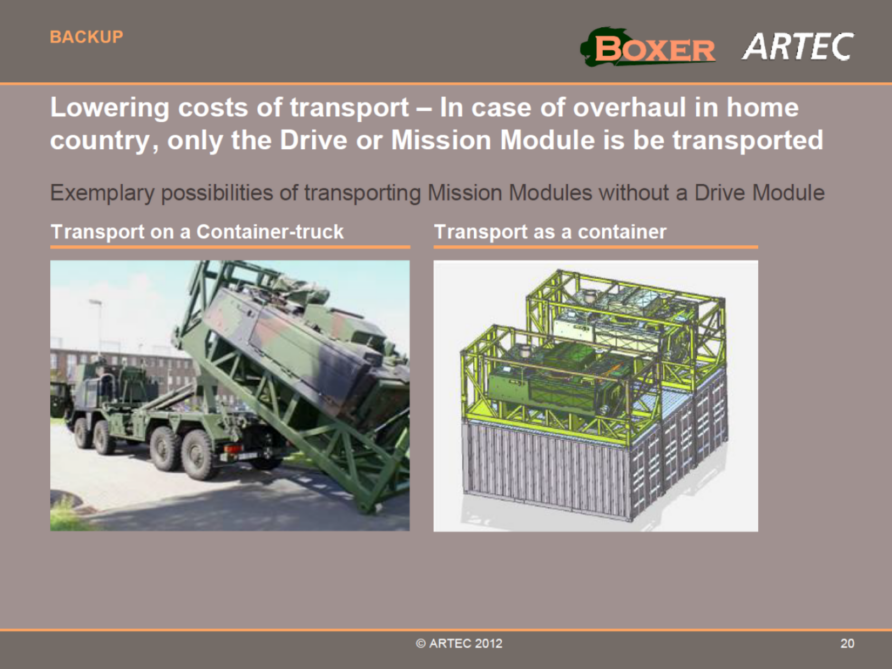
Artec has developed an ISO-compatible lifting and transport frame that allows modules to be transported as an ISO container or using a DROPS/EPLS type hook lift.
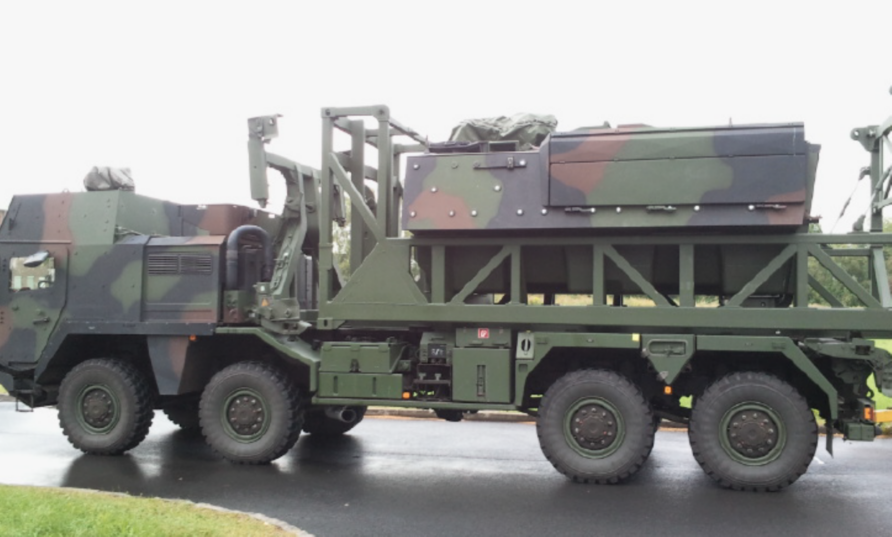
The ISO frame can be stacked as per conventional shipping containers.
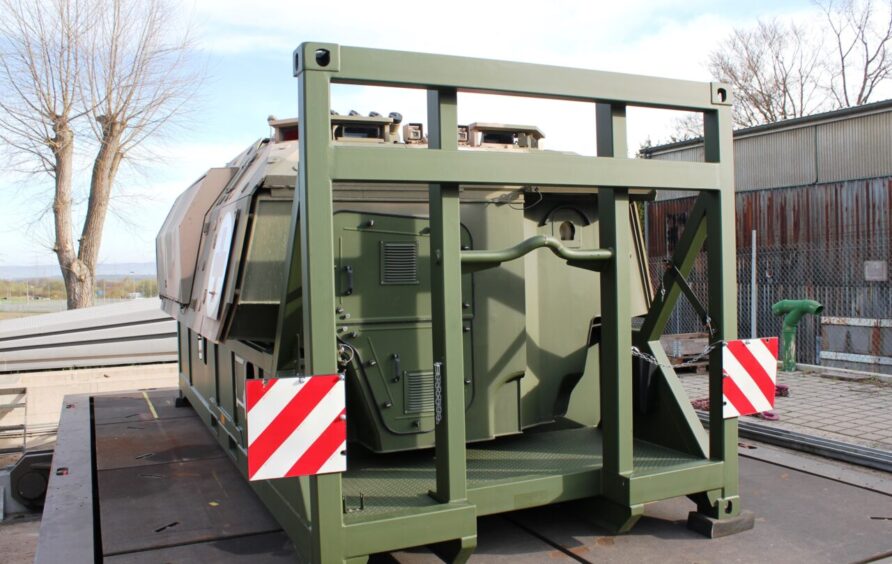
The final advantage is one of national industry. Each user nation can develop modules and add them to the options list for others, according to national priorities or strengths. Australia might develop a repair and recovery module that can simply be purchased off the shelf by others and added to their fleet, for example.
Before reading on, would you mind if I brought this to your attention?
Think Defence is a hobby, a serious hobby, but a hobby nonetheless.
I want to avoid charging for content, but hosting fees, software subscriptions and other services add up, so to help me keep the show on the road, I ask that you support the site in any way you can. It is hugely appreciated.
Advertising
You might see Google adverts depending on where you are on the site, please click one if it interests you. I know they can be annoying, but they are the one thing that returns the most.
Make a Donation
Donations can be made at a third-party site called Ko_fi.

Think Defence Merch
Everything from a Brimstone sticker to a Bailey Bridge duvet cover, pop over to the Think Defence Merchandise Store at Red Bubble.
Some might be marked as ‘mature content’ because it is a firearm!
Affiliate Links
Amazon and the occasional product link might appear in the content, you know the drill, I get a small cut if you go on to make a purchase
Boxer Module Variants
Boxer has been improved and modified to the current A2 configuration and several module variants are in service, in development or proposed.
Driver Training
Germany and the Netherlands share a common driver training module, but Lithuania has a slightly separate design for this role (shown below).
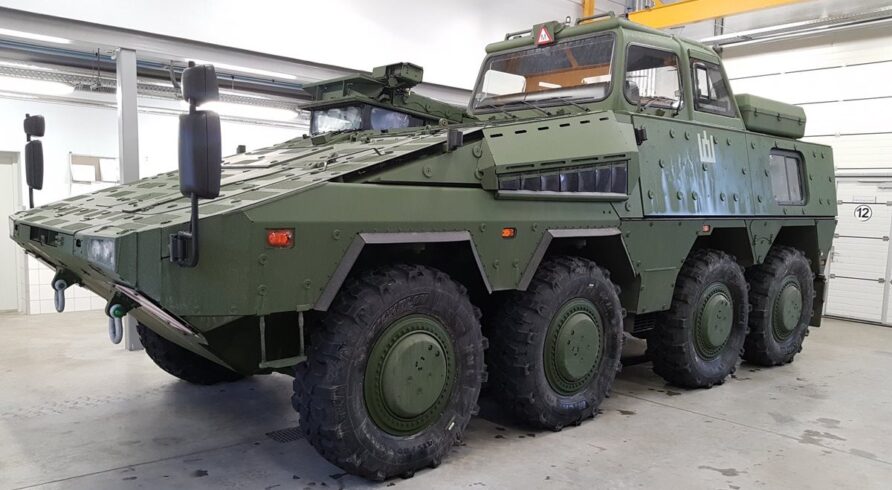
The module provides space for an instructor with all-around vision and the ability to bring the vehicle to a halt quickly.
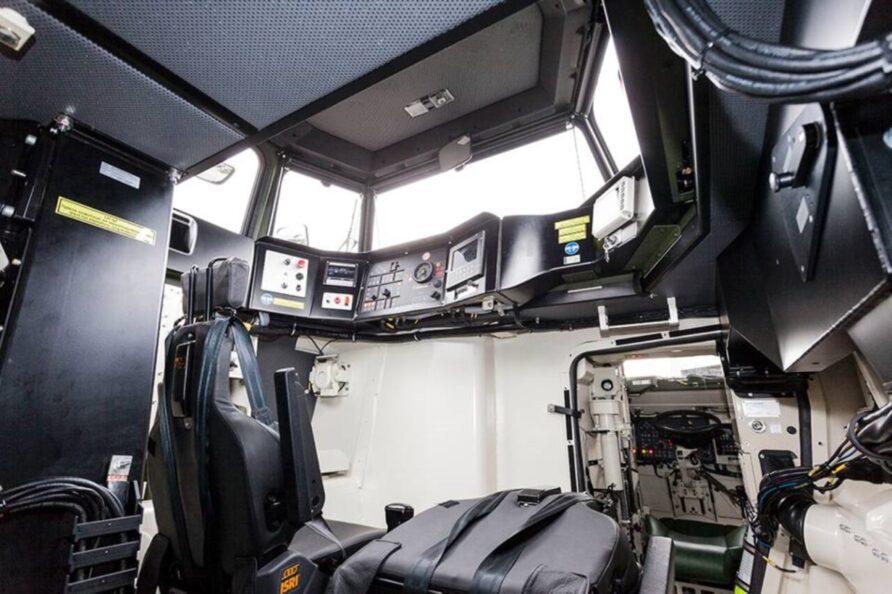
Two passenger seats are also provided for additional trainees and other personnel.
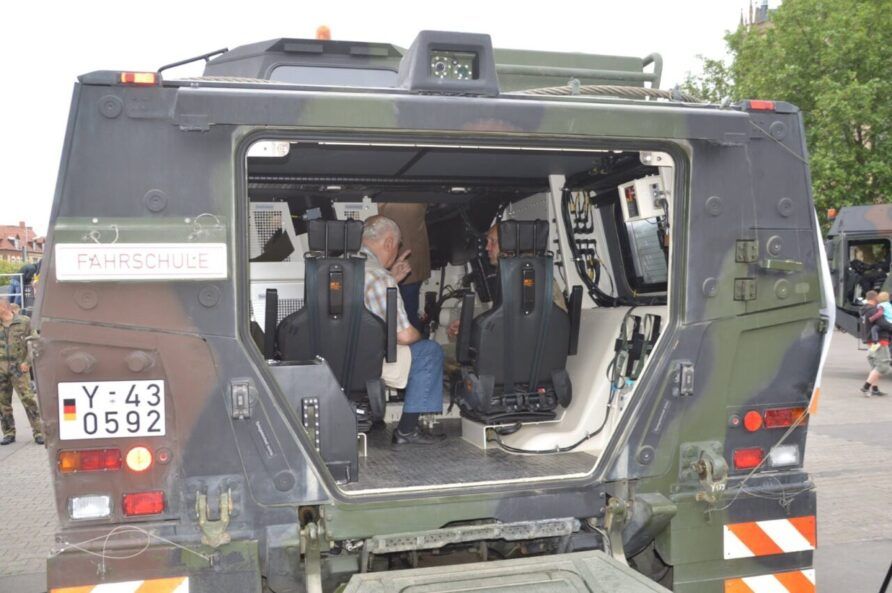
Armoured Personnel Carrier
The most common armoured personnel carrier module has blast-protected seating for the commander, gunner and eight dismounted personnel.
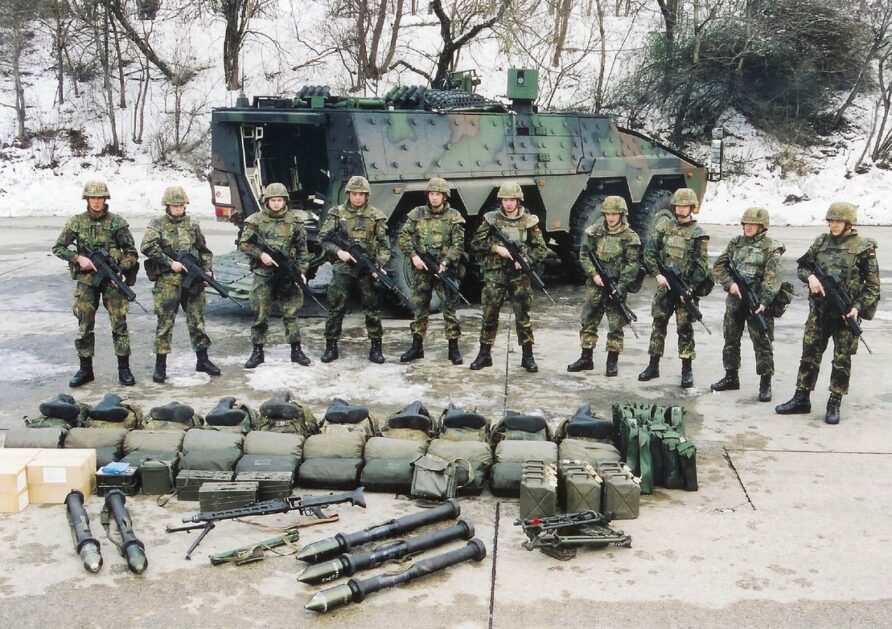
The commander and gunner are provided with vision systems and three additional hatches for the dismounted personnel.
Command and control systems, equipment charging and storage support extended-duration missions, the German configuration, for example, has enough stores for a 10-day mission.
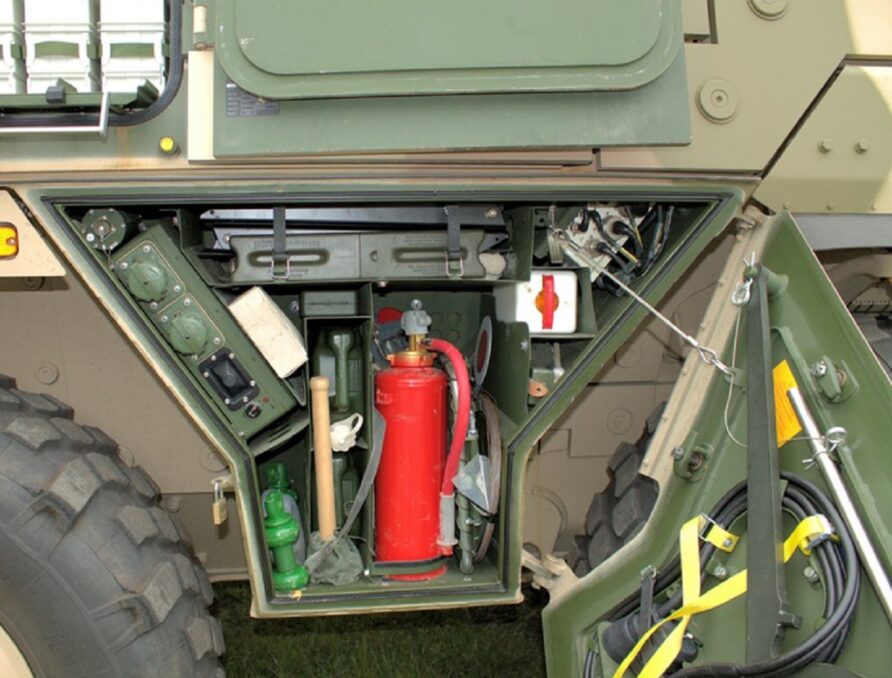
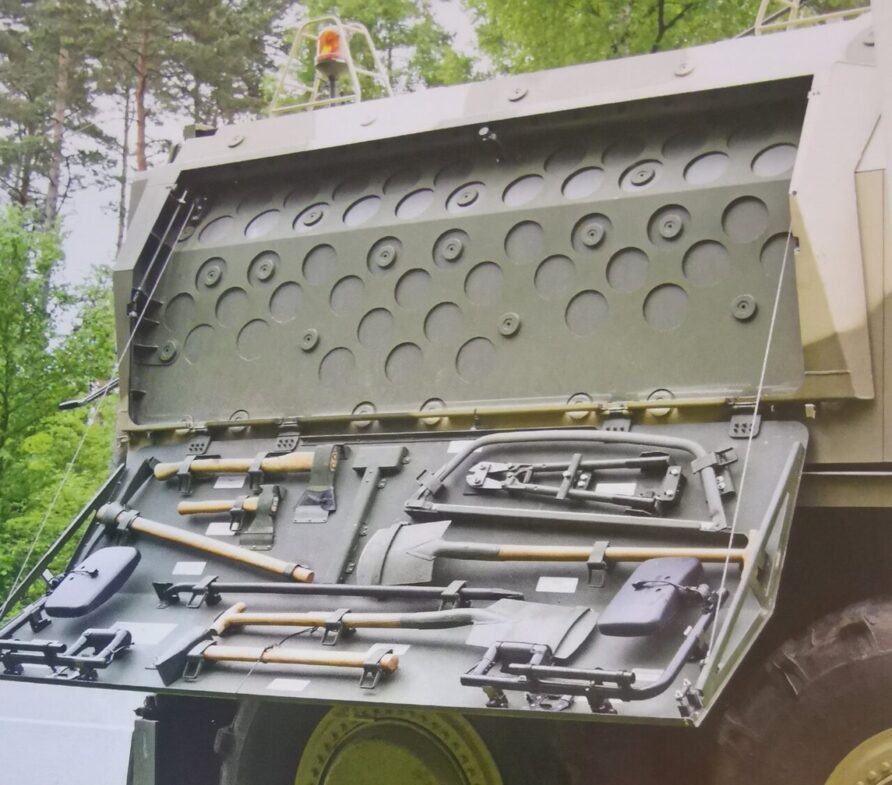
Dutch vehicles are fitted with the Kongsberg M151 Remote Weapon System, mounting a 12.7 mm Heavy Machine Gun.
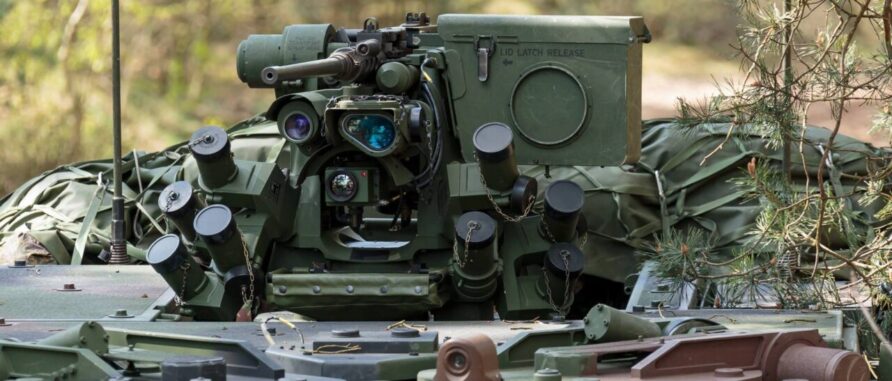
German vehicles have the KMW FLW-200 Remote Weapon System that can also mount a 12.7 mm HMG, 7.62 mm GMP or 40 mm GMG. Later revisions mount this on an extended height ring to allow greater depression.
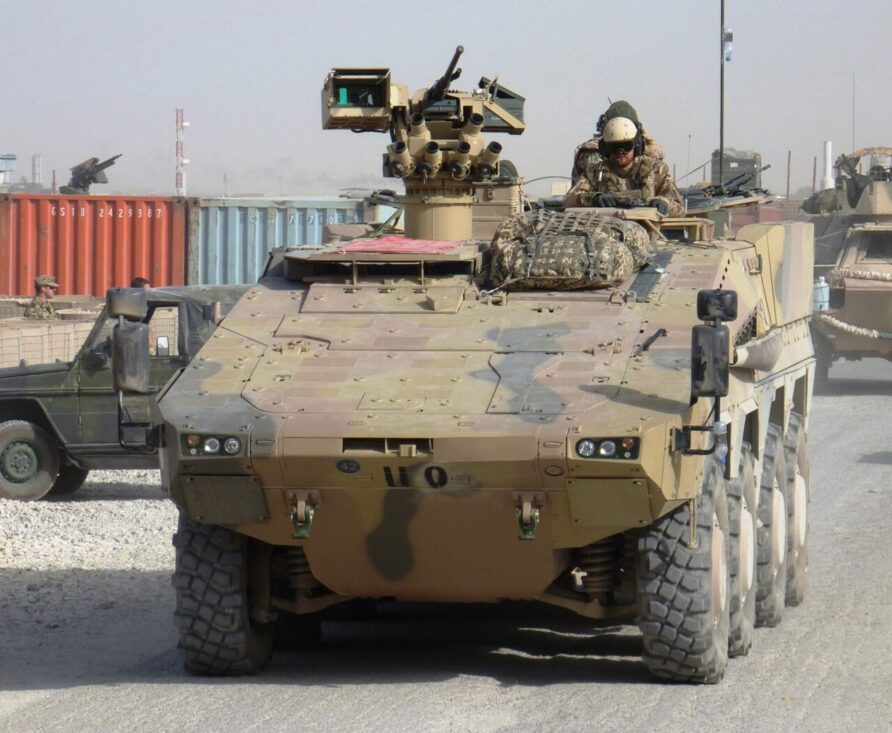
The 400 kg FLW-200+ has also been shown with a 20 mm automatic cannon. A slightly heavier variant called the FLW-500 can be fitted with the ATK/Alliant 30 mm M230-LF and use the same ammunition as the Apache attack helicopter.
Australian Block 2 vehicles will be fitted with the EOS R400 HD Mk2 RWS, although the final selection of weapon seems likely to be a 12.7 mm HMG
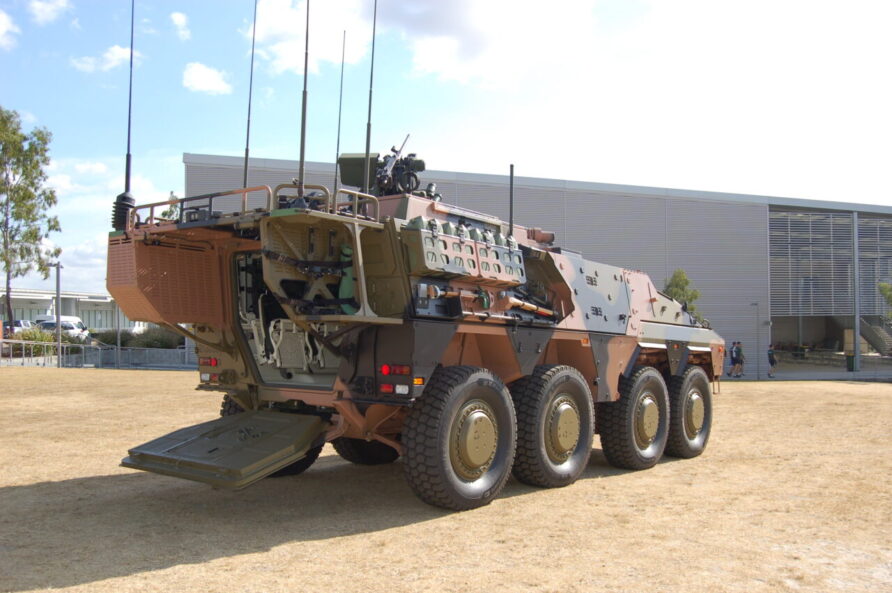
Seating has also been improved over the years, focussing on blast attenuation following experience in Afghanistan, situational awareness cameras have also been added.
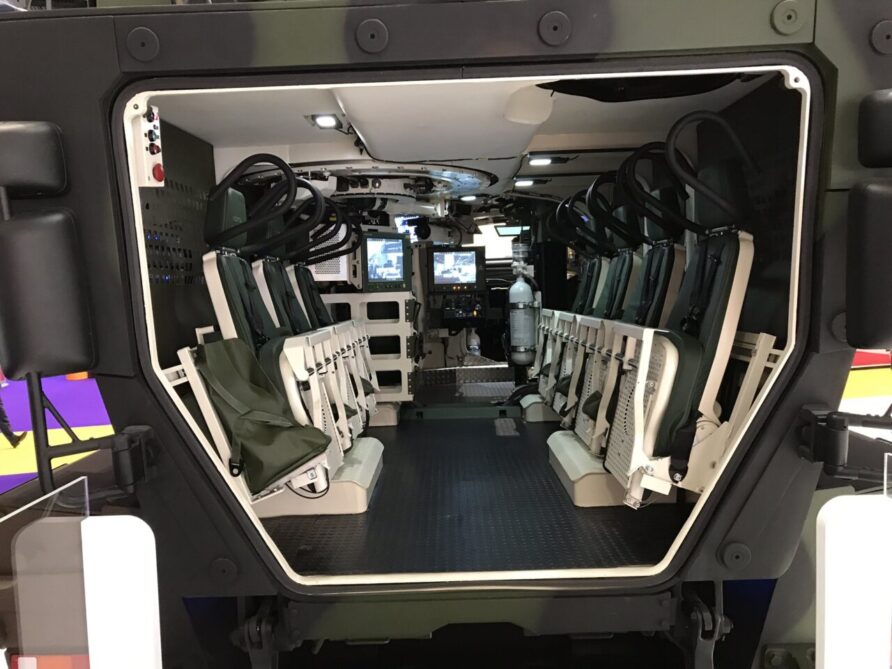
Personnel can also be provided with a range of creature comforts, from integral toilets to the ubiquitous boiling vessel (or ration heater), depending on how deep into the optional extra pack the defence ministry is!
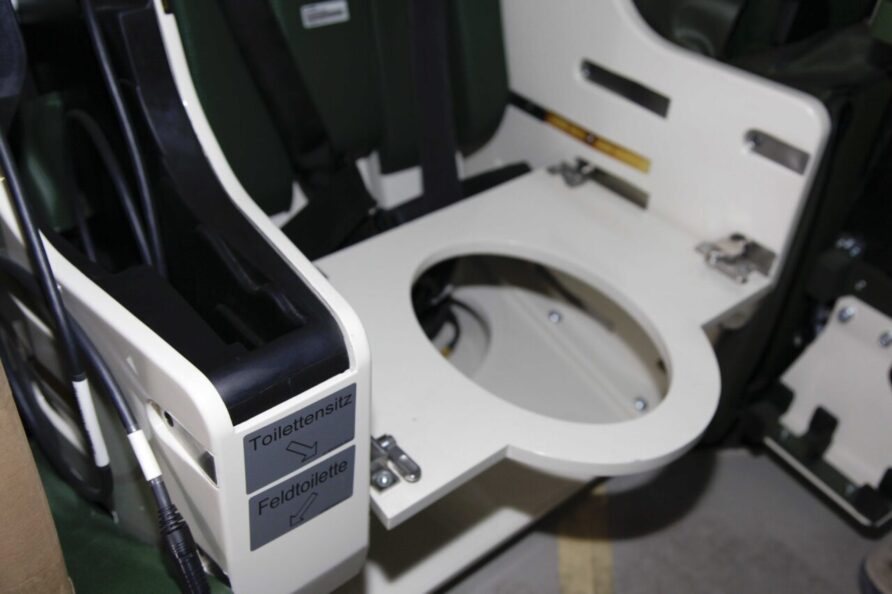
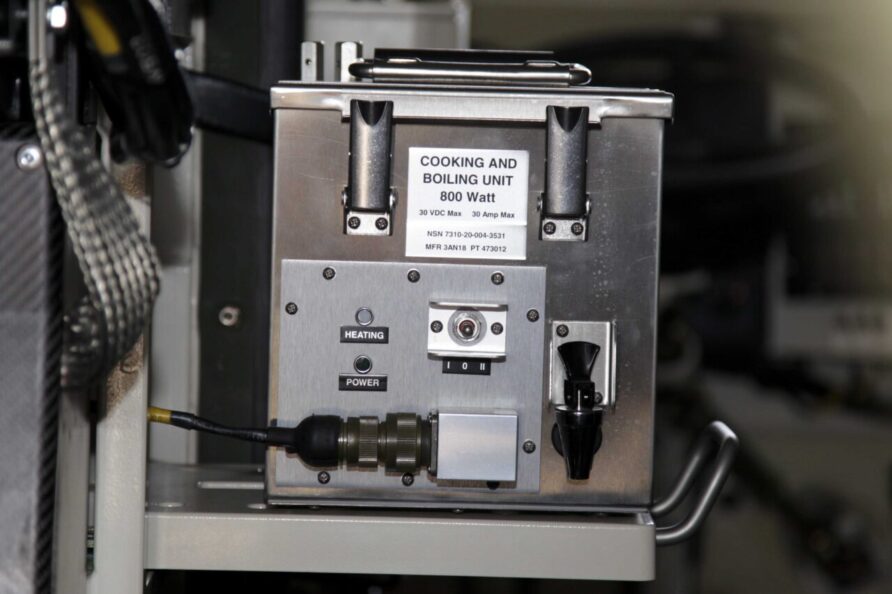
Infantry Fighting Vehicle/Cavalry
The Lithuanian ‘Vilkas’ variant of Boxer uses a Rafael 1.5 tonne Samson Mk II RWS
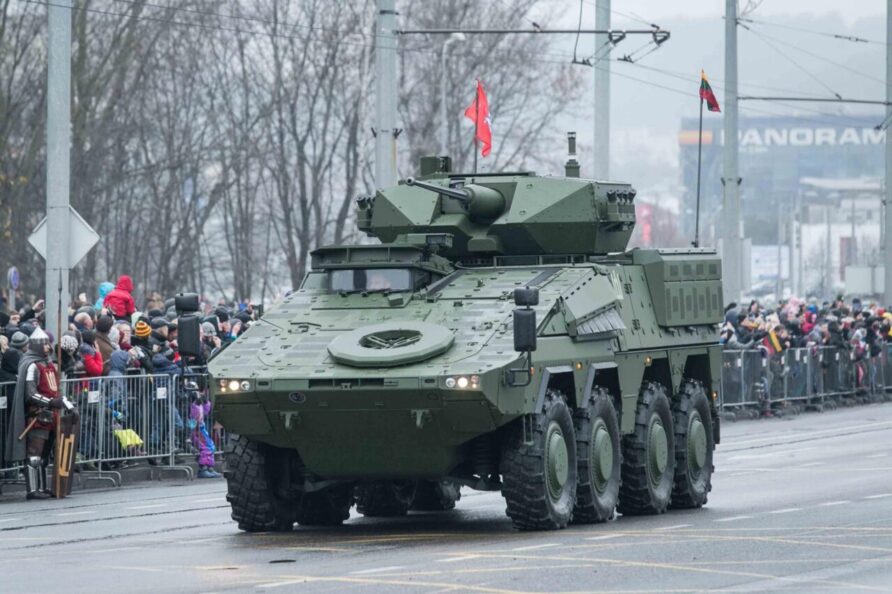
The Samson is fitted with a 30 mm Bushmaster cannon and Spike missiles. The commander and gunner have separate sights (daylight and thermal imaging) and can operate in hunter-killer mode. The gun can also be unloaded from the inside.
Boxer was originally demonstrated with the RCT 30 unmanned turret as fitted to the German Puma infantry fighting vehicle.
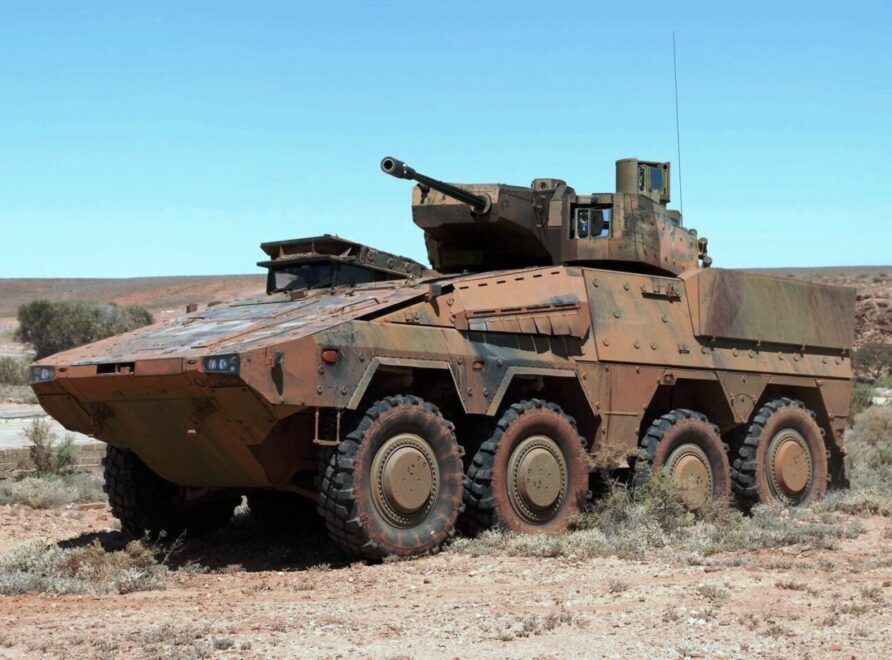
Lithuania has ordered 88 vehicles in total, 82 in IFV, 2 Driver Training and 4 Command variants. The total contract value for the Lithuanian vehicles is 386 million Euros, or roughly £3.9m each, with KMW making 53 and Rheinmetall, the remainder.
The Australian CRV uses a Lance modular manned turret with a dual belt-fed Rheinmetall 30 mm MK-30/2 ABM automatic cannon and 7.62 mm GPMG. It also has an RWS with a 7.62 mm weapon. The main gun can use programmable ammunition.
With the manned turret, the dismounted personnel seats are reduced to four. The Australian CRV uses larger 27″ Michelin XML tyres and various other changes, reflecting both national requirements and the availability of modern systems when compared to the original design, fabric air conditioning ducting and improved exhaust management in dusty terrain for example.
Block II CRVs are planned to be fitted with turret-mounted Spike LR2 ATGW.
A number of other turrets and RWS have been proposed and demonstrated on Boxer.
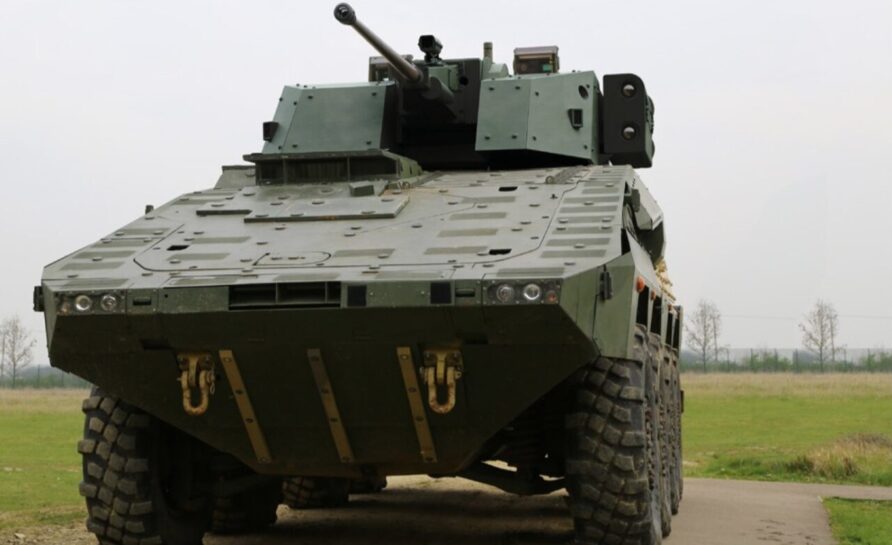
Including with Javelin missiles.
Boxer has also been shown with Kongsberg RT60 remote turret.
The RT-60 mounts a 30×173 mm Bushmaster XM813 cannon, coaxial 7.62×51 mm MG, RWS with 12.7×99 mm HMG and a twin retractable ATGM launcher (with Javelin, MMP or Spike ER)
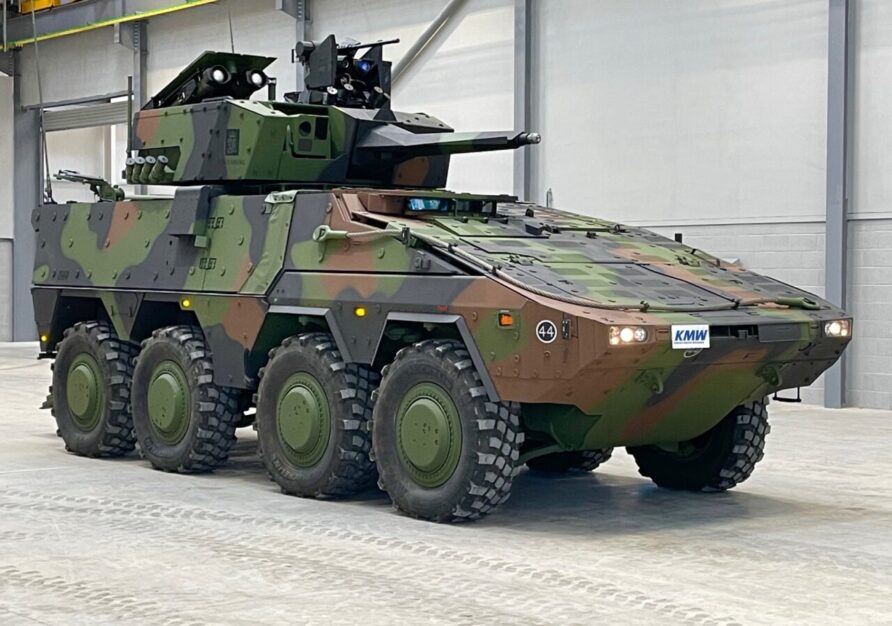
The evergreen John Cockerill has also integrated their 3105 turret with a Boxer module
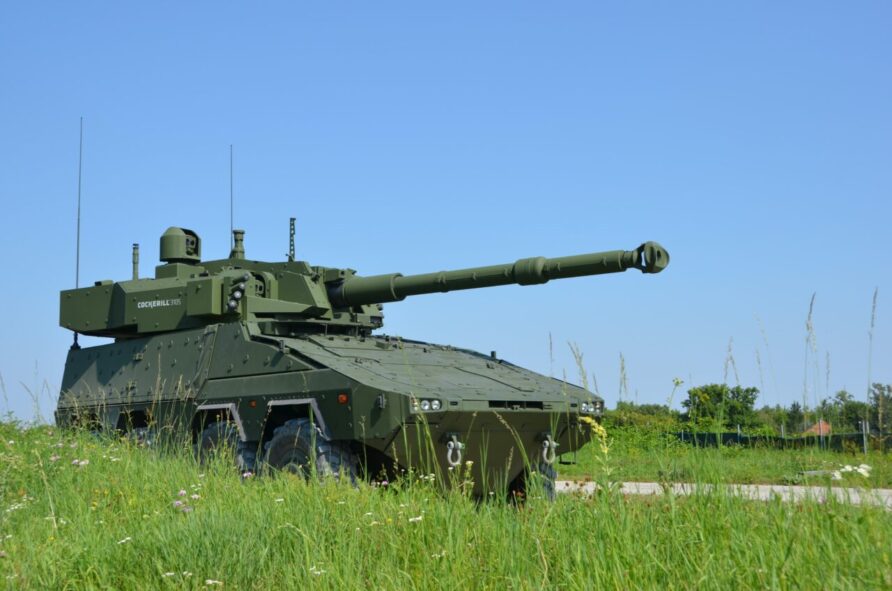
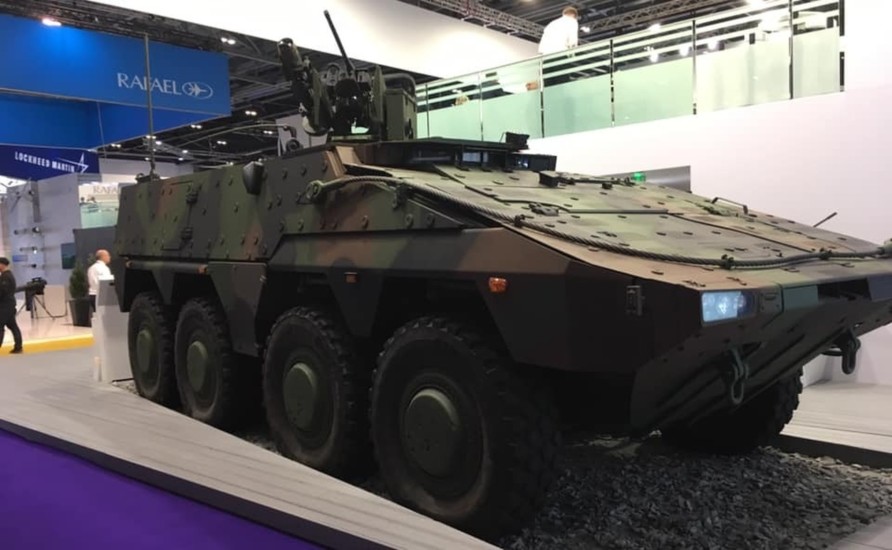
At the same time as unveiling the Boxer Tracked Drive Module, KMW showed it off with their RCT120 turret.
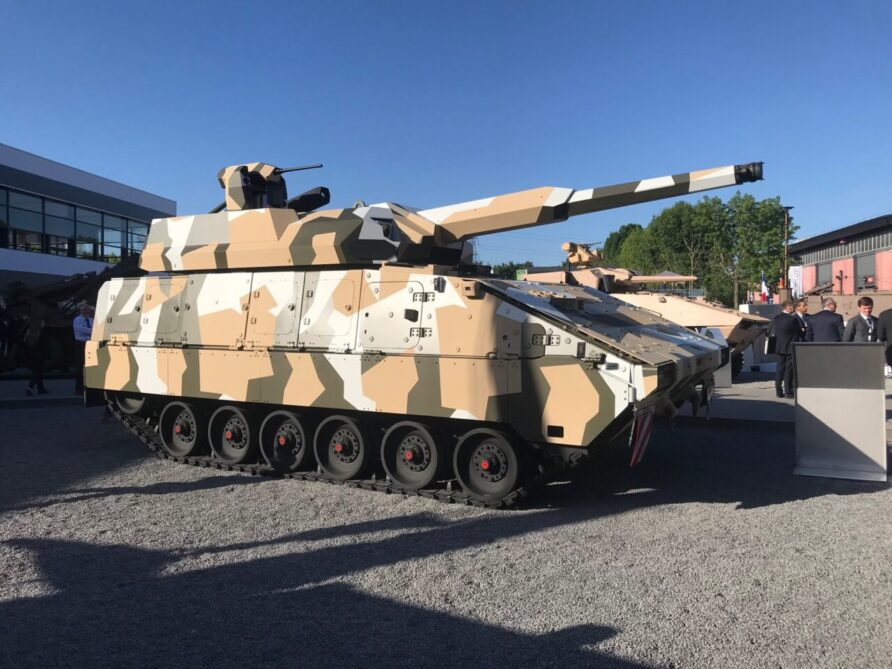
Ambulance
Both Germany and the Netherlands have different ambulance variants.
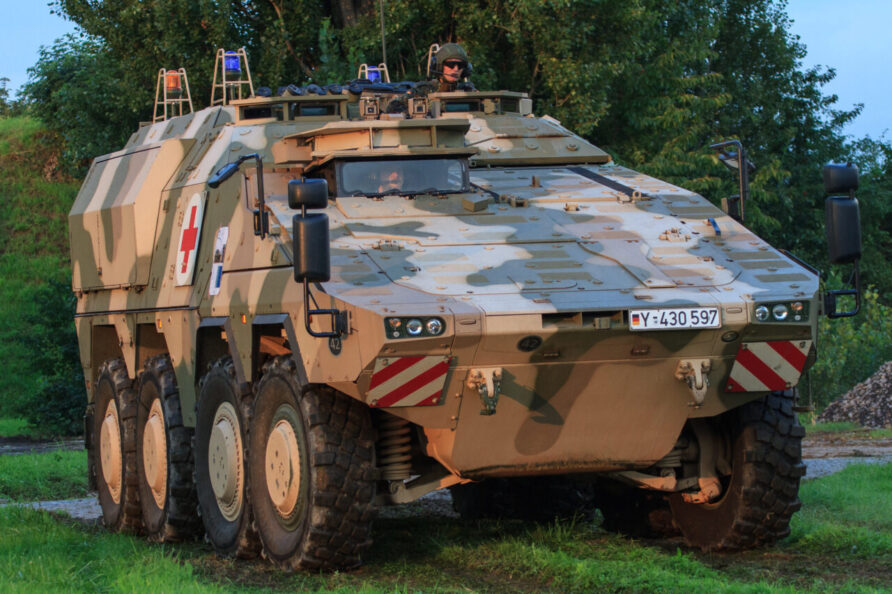
The higher roof provides 17.5 m³ of protected volume and a floor-to-roof height of 1.85m.
Whilst the layouts and equipment fits differ, their flexibility allows combinations of 7 seated casualties, 3 stretcher casualties, 2 stretchers and 3 seated casualties or 1 stretcher casualty accessible from both sides and above.
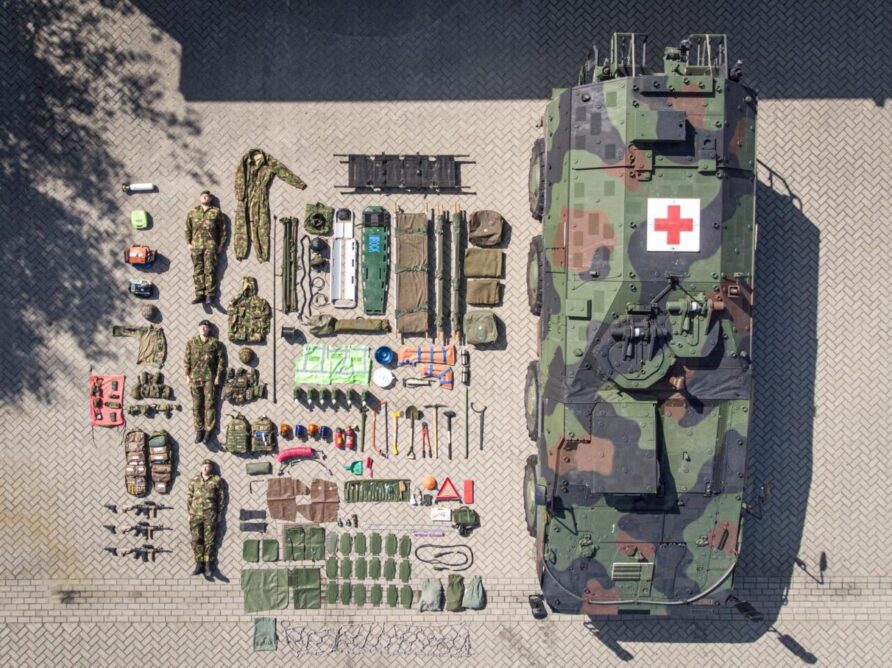
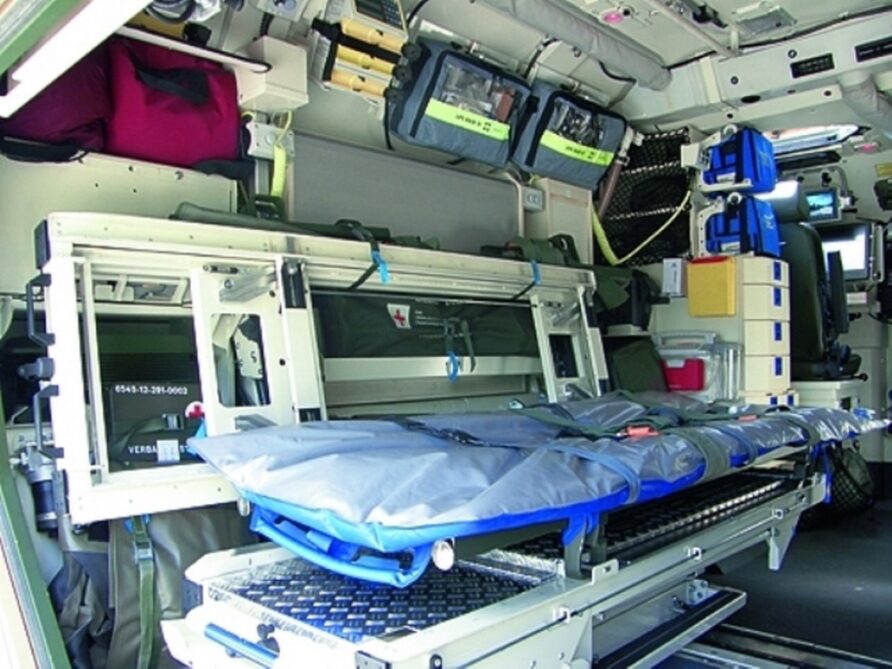
Command
The two command post variants are specific to Germany and the Netherlands, each configured with country-specific communication and other electronic systems.
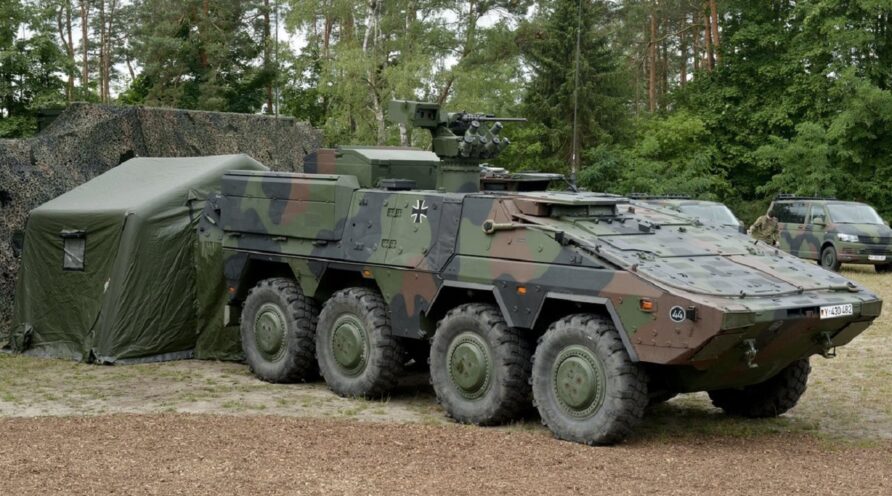
In addition to the vehicle commander and driver, there is accommodation for three command personnel.
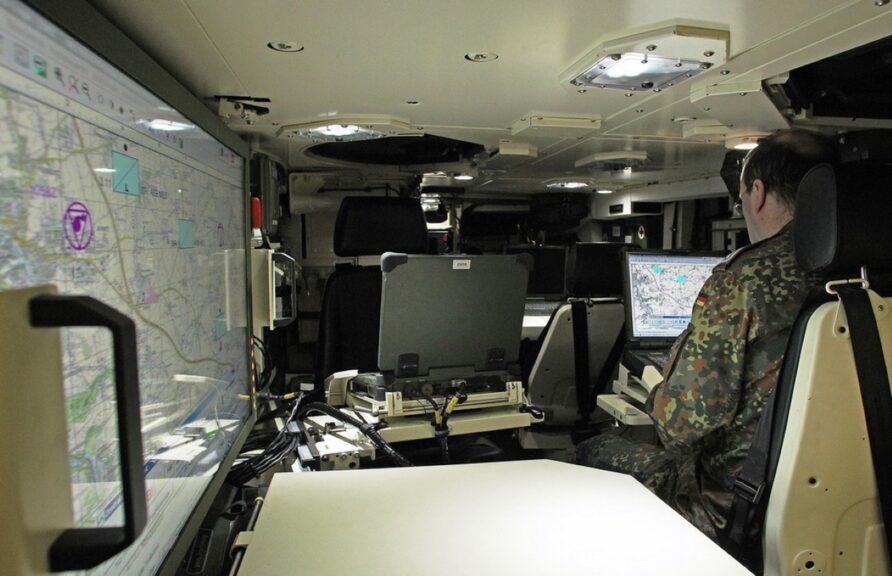
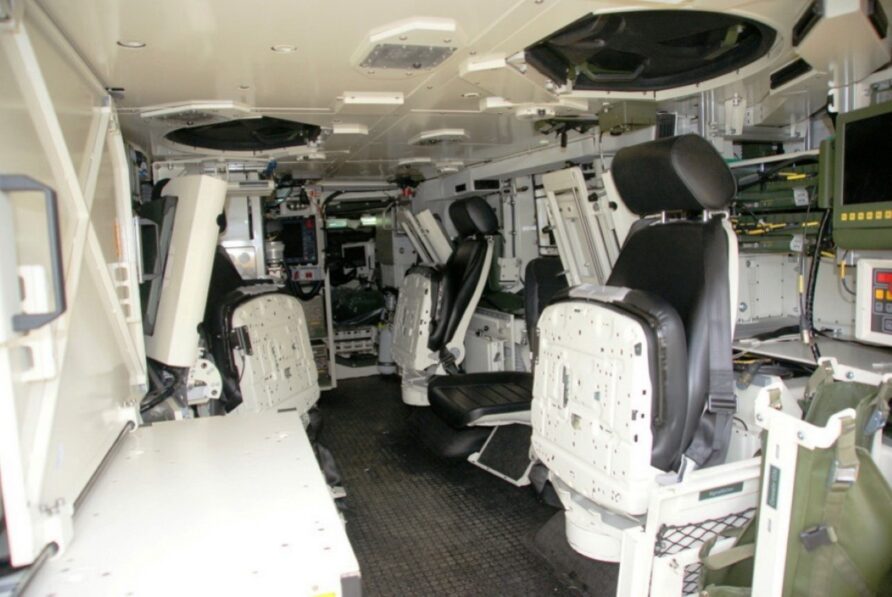
The German version has a roof-mounted manually operated jib used to load and unload tentage.
Engineering and Cargo
The Cargo variant can carry two 1-tonne pallets with full protection and a cargo floor system that includes a movement and stowage system.
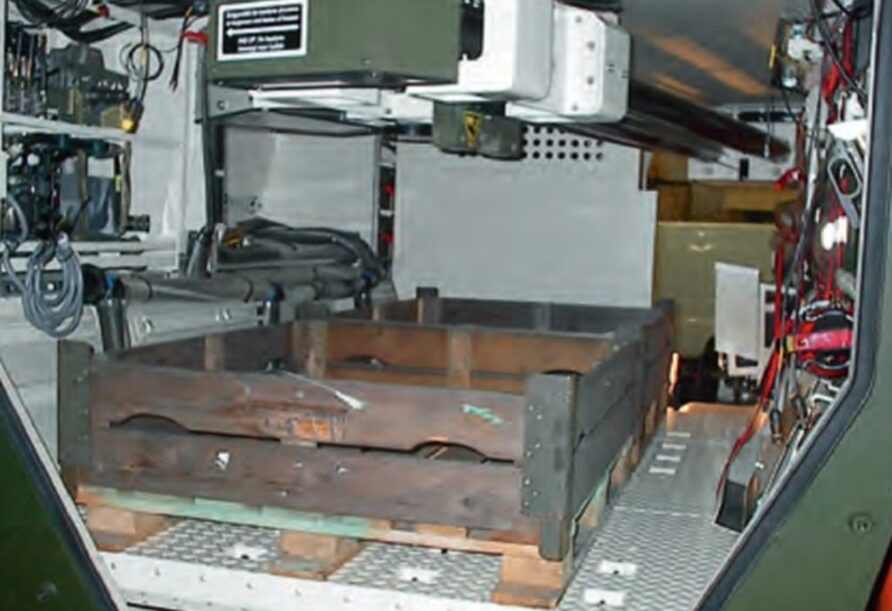
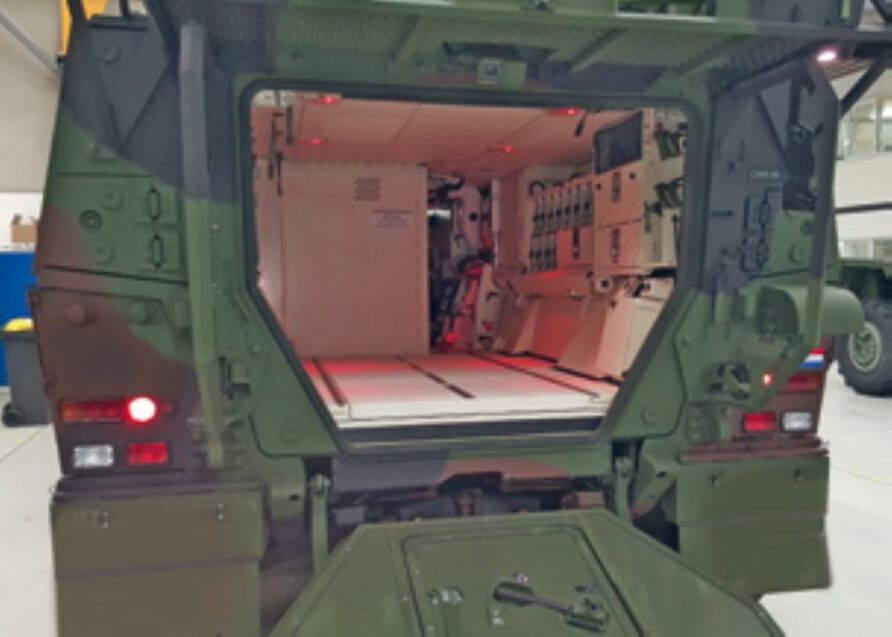
Derived from the Cargo variant, the Cargo/C2 variant has a flexible interior that can be used for command functions (with seating for 3 extra passengers, cargo transport for one and a half tonnes of cargo or casualty transport with a NATO stretcher and casualty.
The Armoured Engineer Group vehicle has a crew of two and carries six combat engineers for mining, demining, and related activities, including their stores, some of which are carried on the roof in specialist racking.
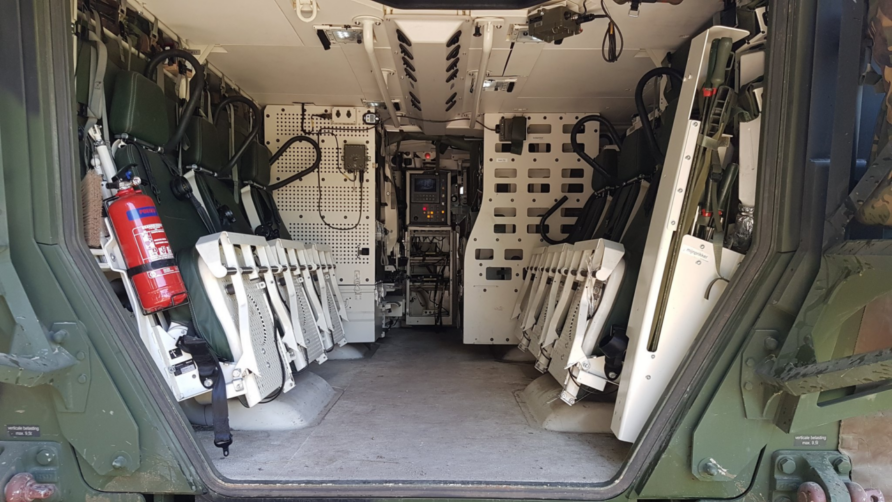
A Battle Damage Repair variant has seating for the commander/driver and two engineering personnel, stores and equipment to effect forward repairs.
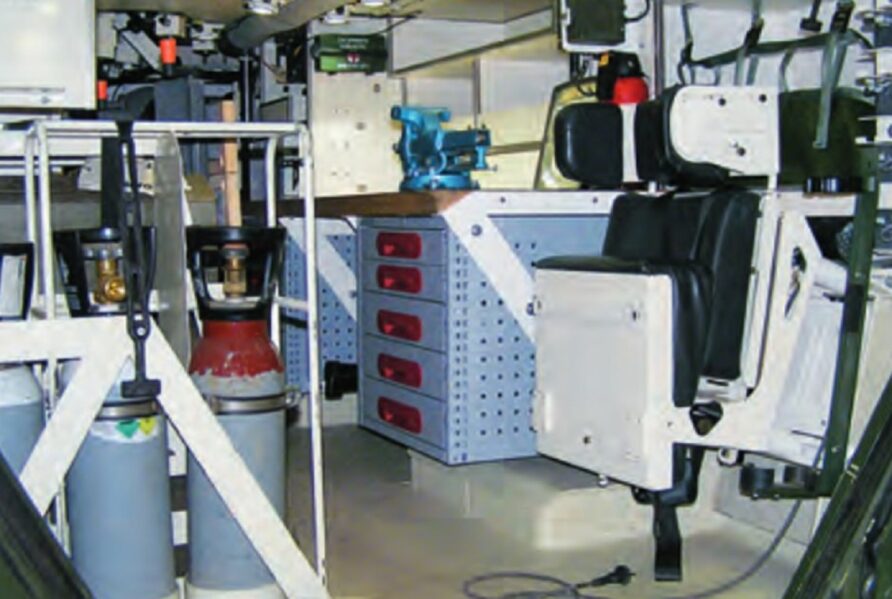
Pearson Engineering has also released many concept images for fitting Boxer with various attachments for lane marking, route proving and mine clearance.
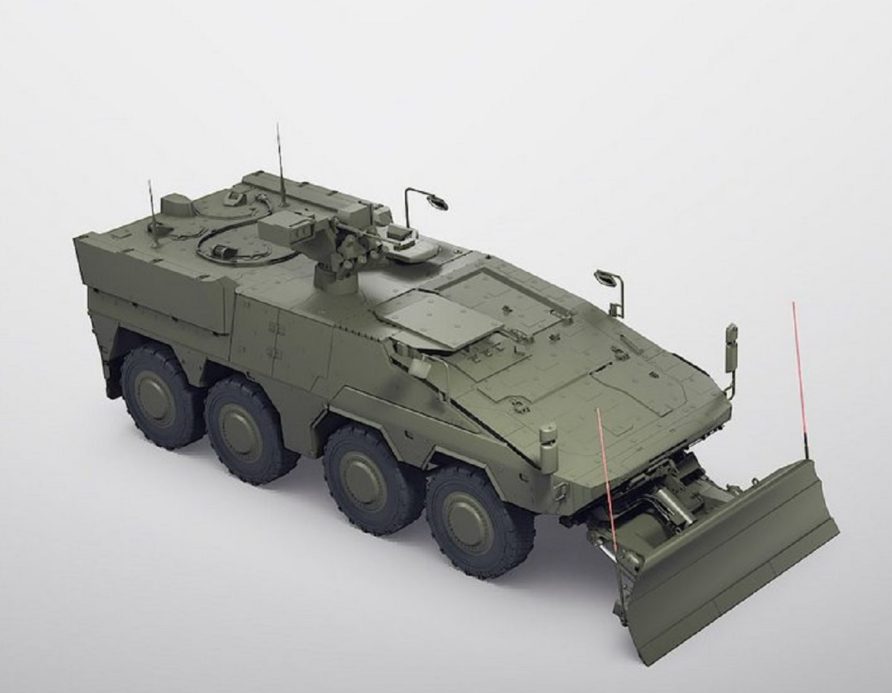
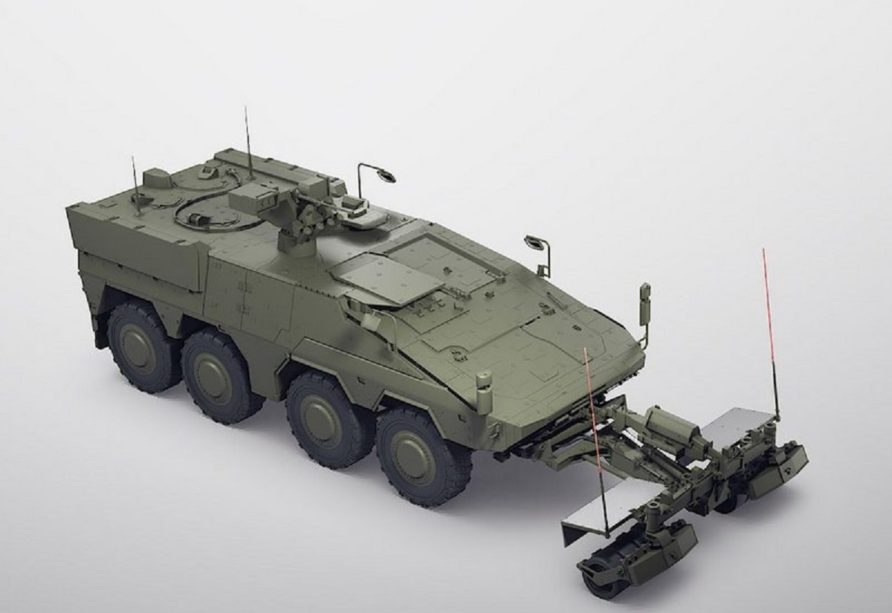
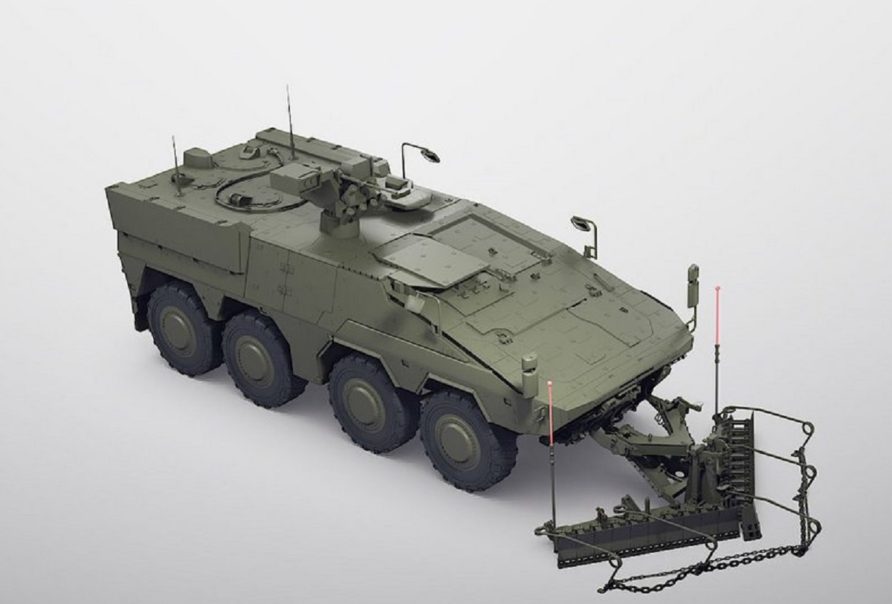
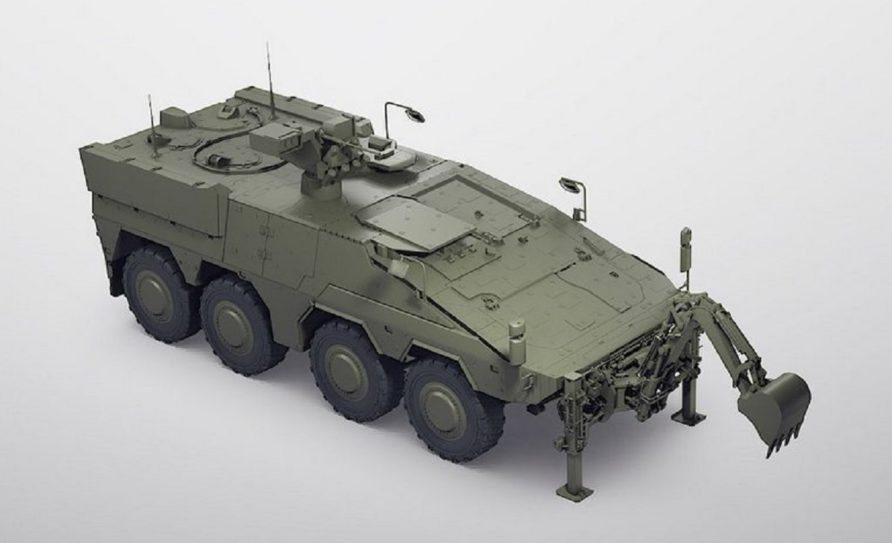
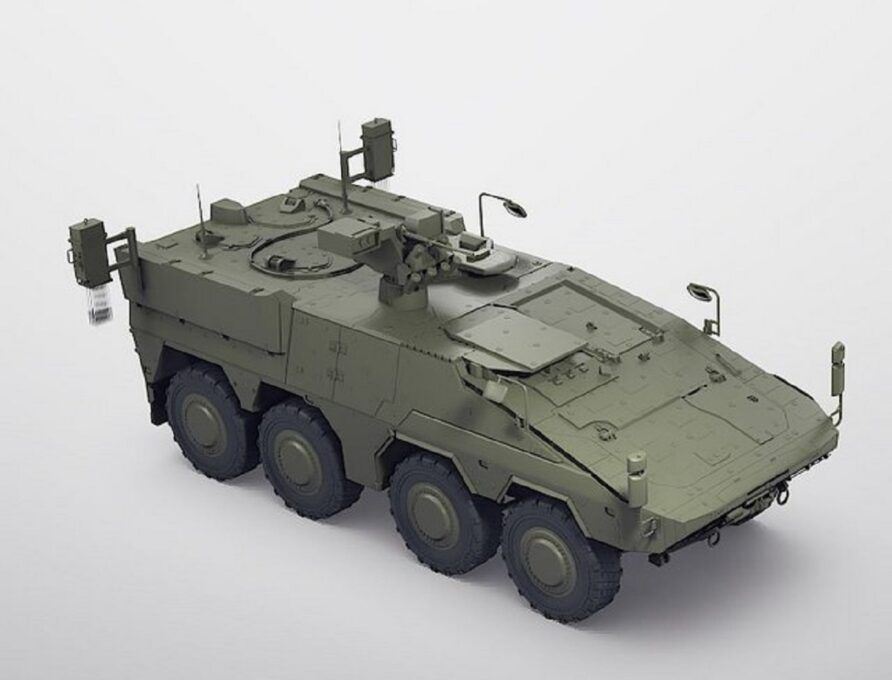
Recovery
Flensburger Fahrzeugbau Gesellschaft mbH (FFG) has produced an armoured recovery module for Boxer, equipped with both a straight pull winch and slewing crane.
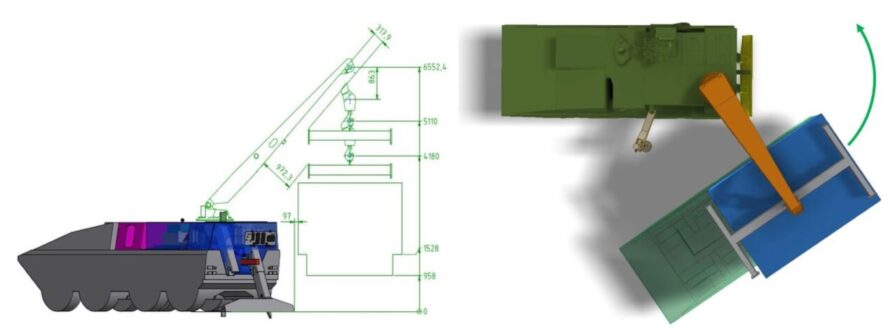
The module weighs approximately 13 tonnes and has seating for two (commander and gunner, it is assumed an RWS of some sort will be specified by the customer).
The recovery equipment can be used independently of the drive module, as an integral battery powers the hydraulic system.
The capstan winch has a straight pull of 20 tonnes and is fitted with 60m of Kevlar-reinforced rope. The boom crane is 5.3m long and has a lifting capacity of 20 tonnes, enough to complete a pack or module change, both can be operated remotely from outside the vehicle.
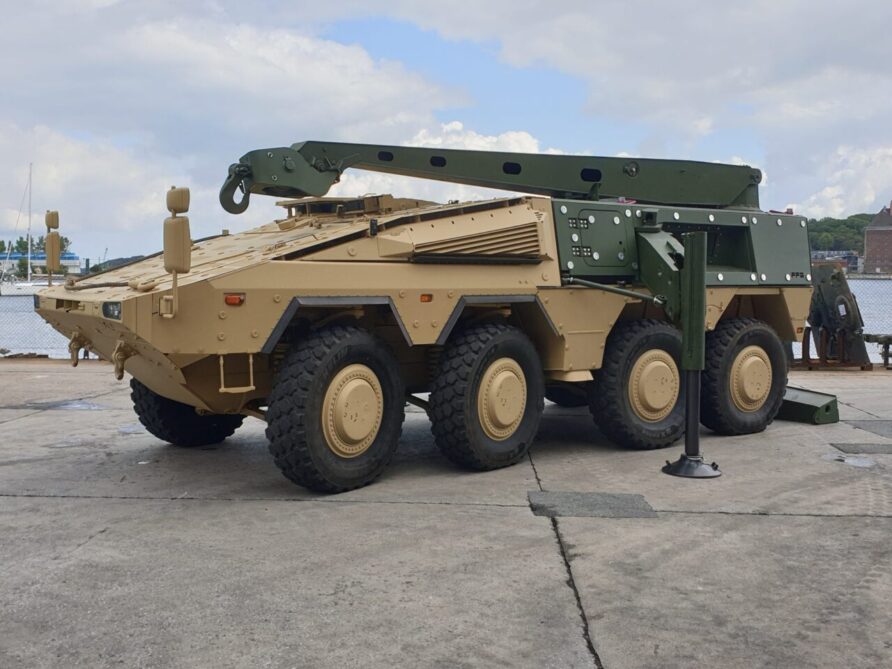
The module also contains various pneumatic and other hand tools. When the crane slews sideways, outriggers can be deployed, retracting into the module in the stowed position.
Bridging
KMW has developed and demonstrated a bridging module for Boxer that can use their Leguan bridge system to span a 13m gap at MLC100 or 22m at MLC50.
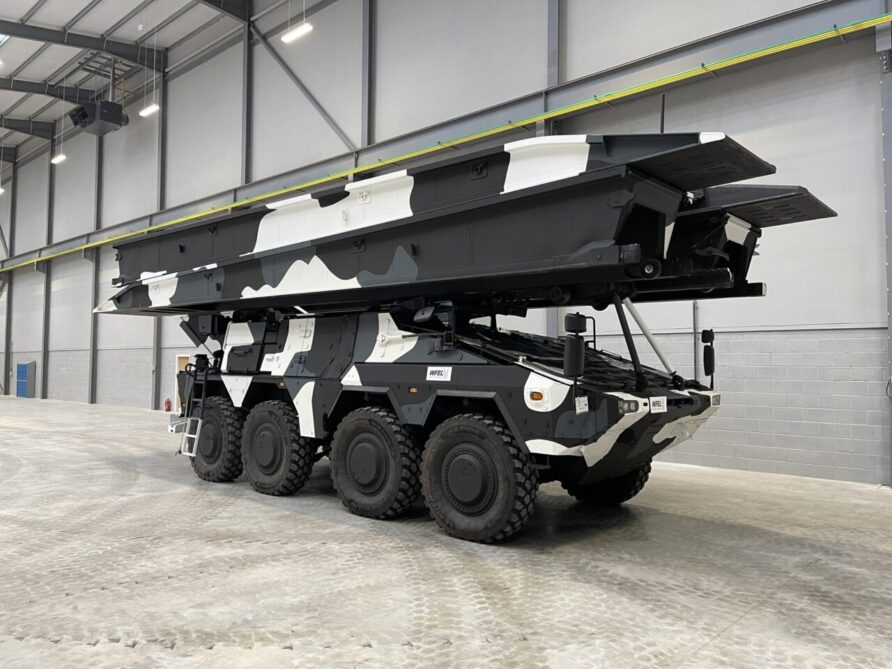
Pearson Engineering have also shown Boxer with their Bridge Launch Mechanism for conventional assault bridges
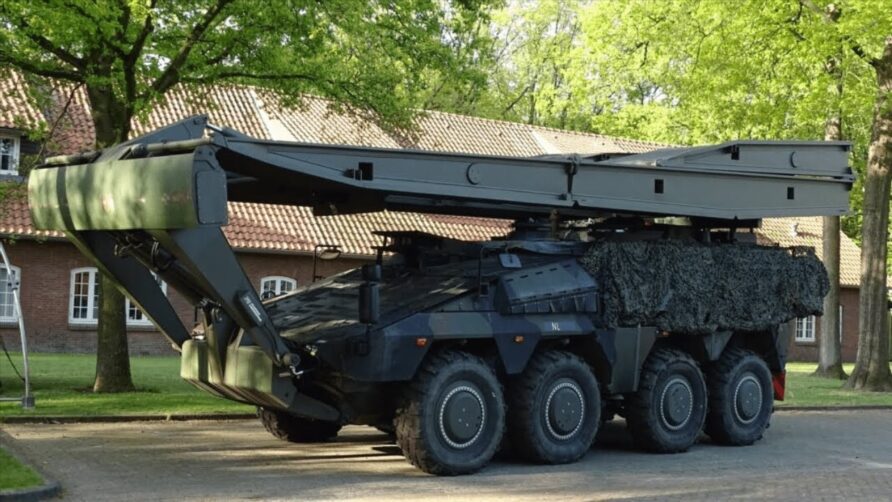
Artillery
KMW has integrated their 155mm artillery gun on Boxer.
The Automated Gun Module uses the proven 155 mm/L52 barrel from the PzH2000 with an automated loading and fire control system to enable 360° azimuth and up to 54 km range. 30 projectiles and 144 charge modules are carried, with a maximum firing rate of 9 rounds per minute.
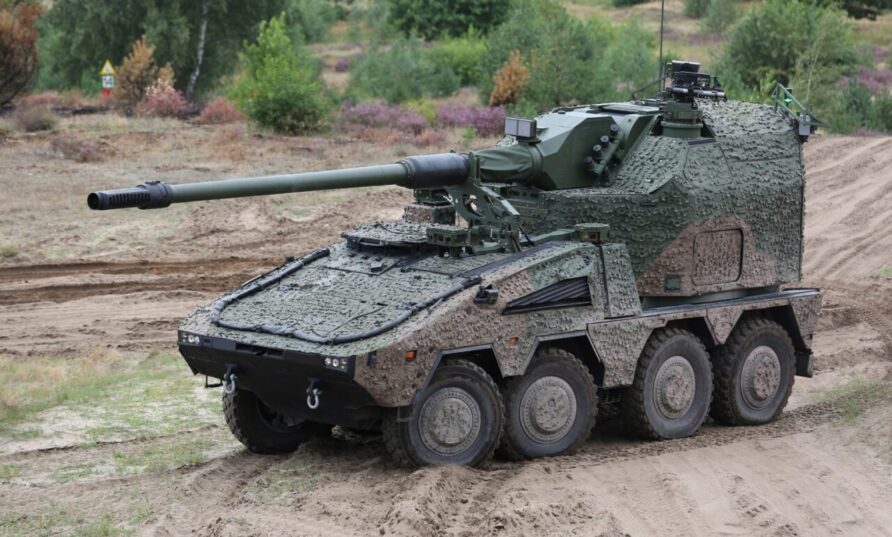
It can fire with up to 6 propellant charges before needing additional vehicle support. Base bleed provides a maximum range of 40 km with V-LAP up to 54 km, with the latter, it can cover an area of 5,026 km².
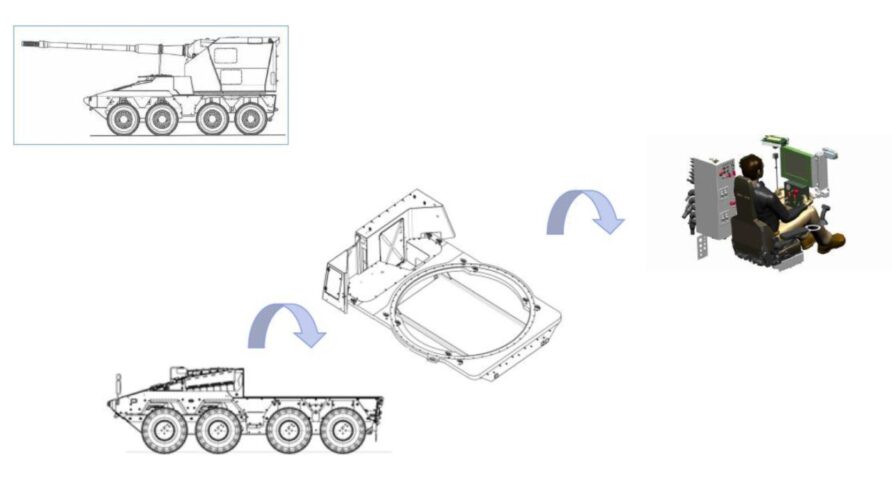
The maximum weight is 39 tonnes, well over the maximum payload of the A400M, not that it would fit anyway as it is too high.
Mortar
RBSL have developed a mortar variant that can utilise a Rheinmetall 81 mm or 120 mm tube called Ragnorak
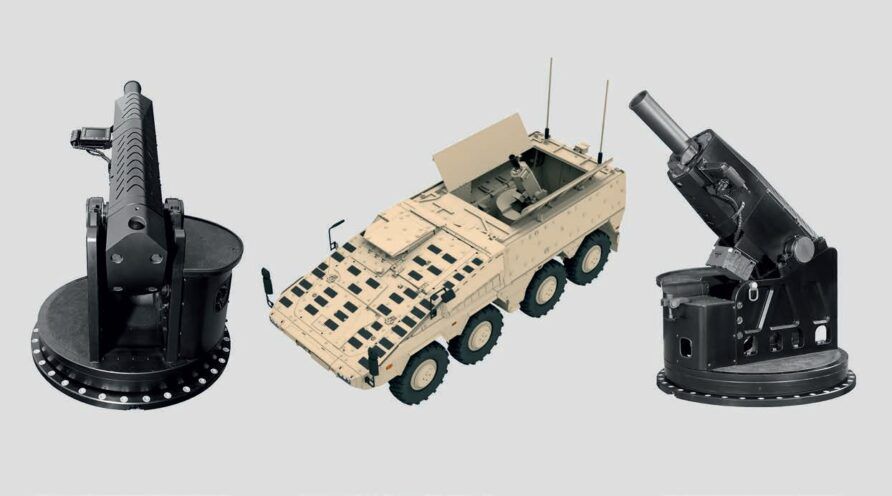
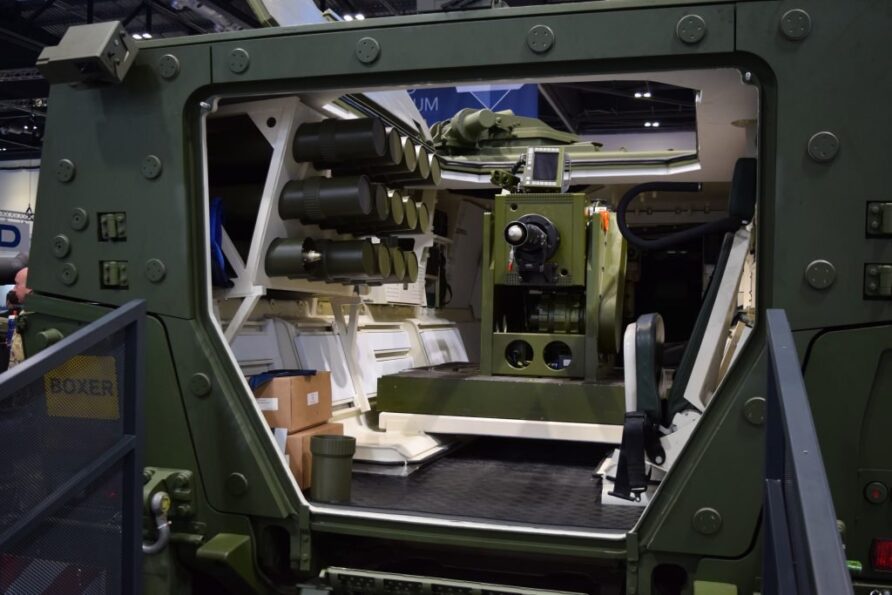
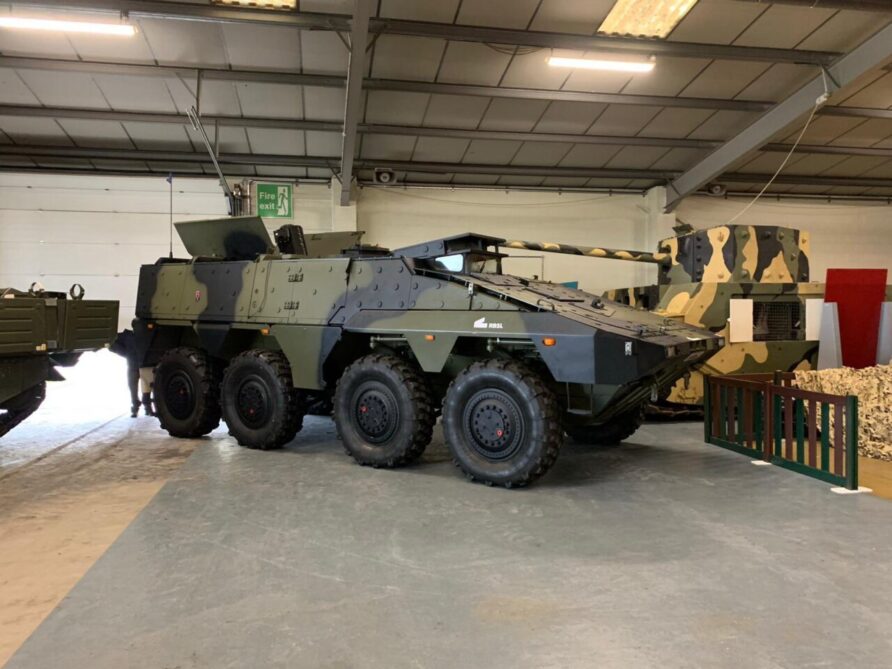
It was live-fired with 120 mm natures in 2022
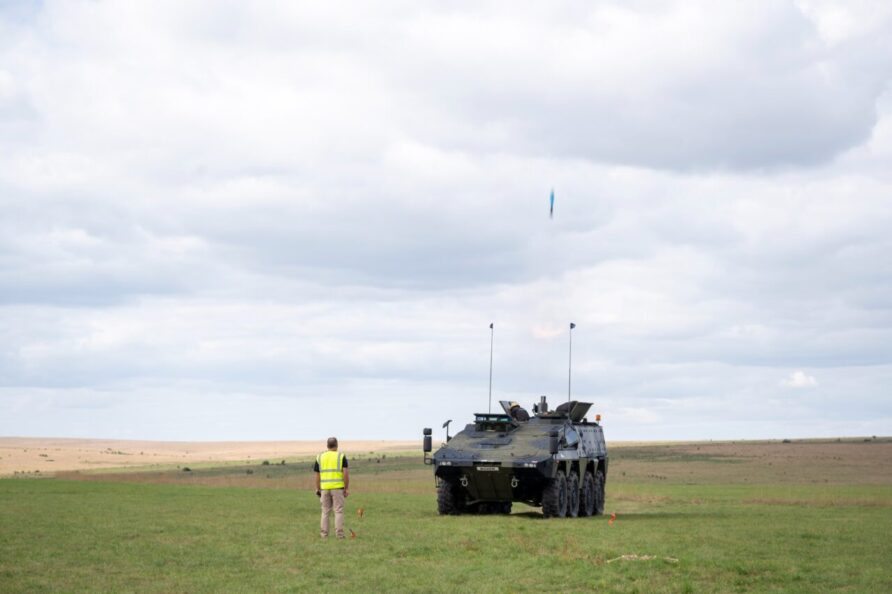
A concept using the Patria Nemo turreted 120 mm mortar has also been modelled.
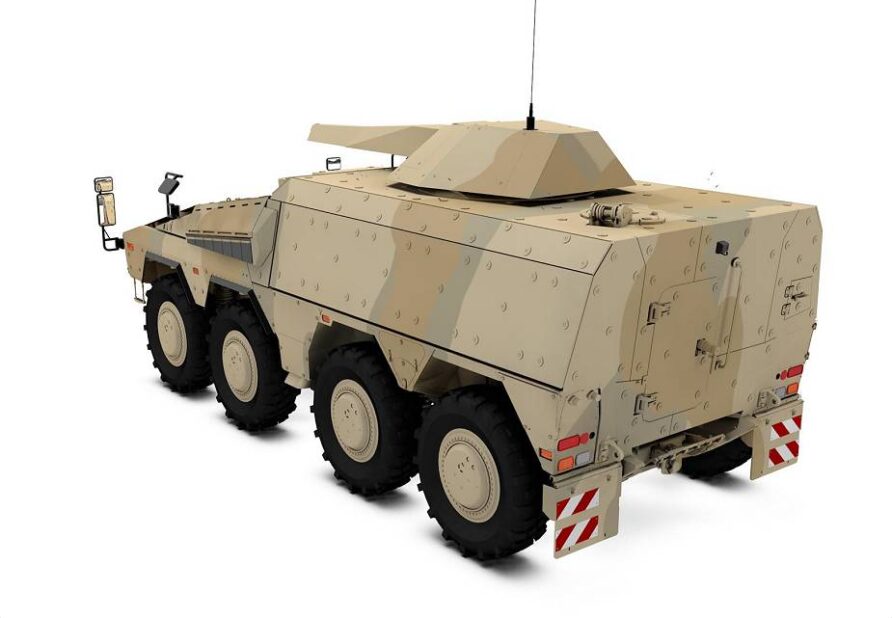
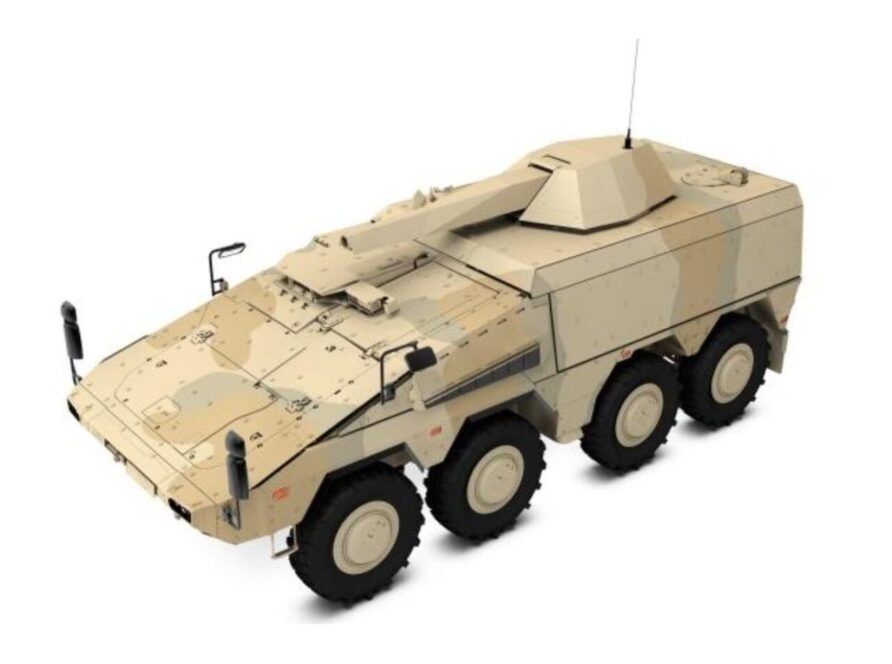
MLRS — Land Precision Strike
These only exist as illustrations, shown below.
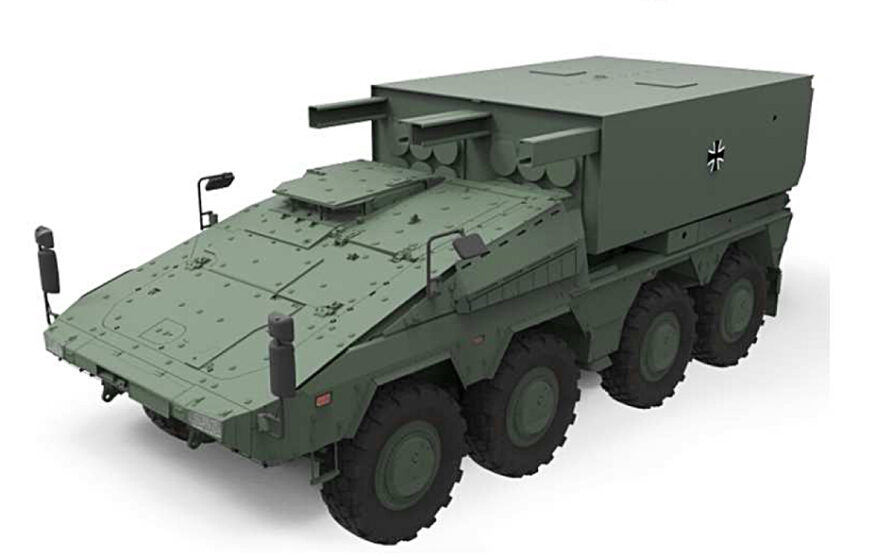
Land Precision Strike is a UK-specific programme that may employ several effectors, not just GMLRS (not to be confused with Mounted Close Combat Overwatch (MCCO).
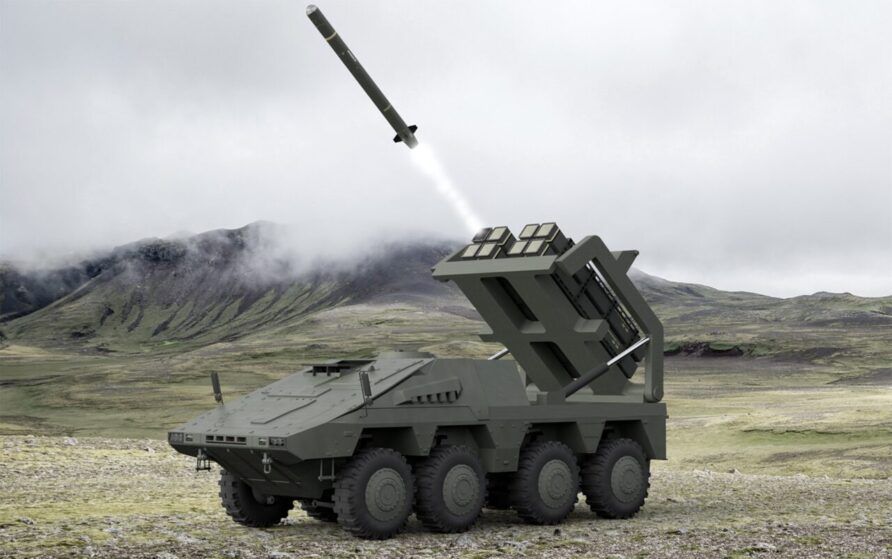
Weapon Locating and Joint Fires Surveillance
Saab has shown an illustration of a Boxer module equipped with a combination of their ARTHUR weapon locating and Giraffe 3D radar systems.
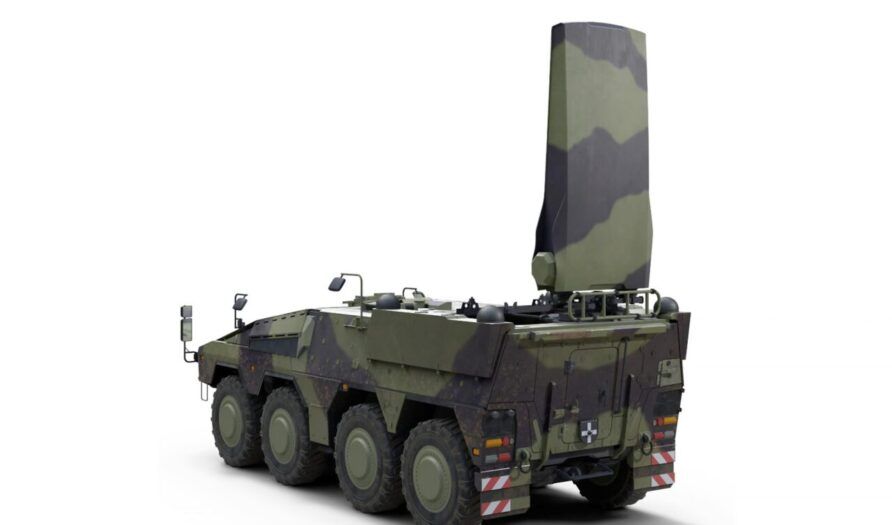
Again, concept art is only at this stage.
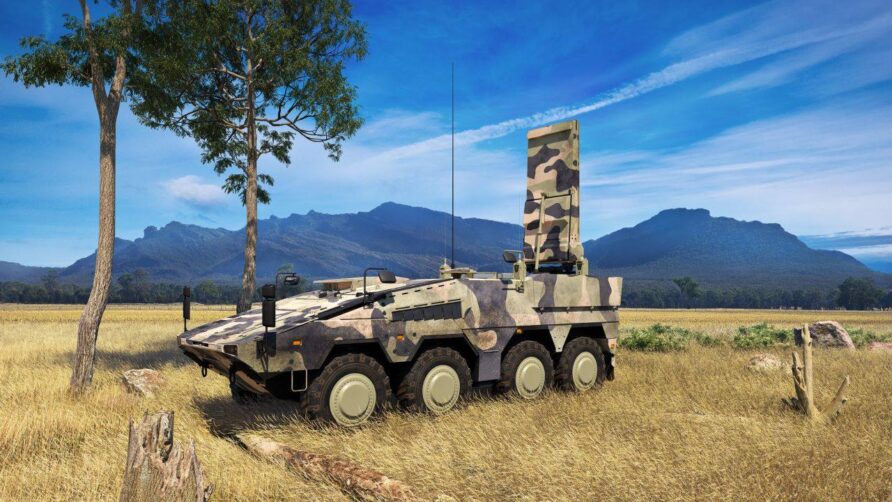
Germany is planning a heavy Fire Support Team vehicle, a larger version of their Fennek. It is planned to be equipped with a Hensoldt BAA II surveillance system.
Australia also has surveillance and joint fire variant planned, the Land 400 Close Combat Storyboard illustrates the requirement.
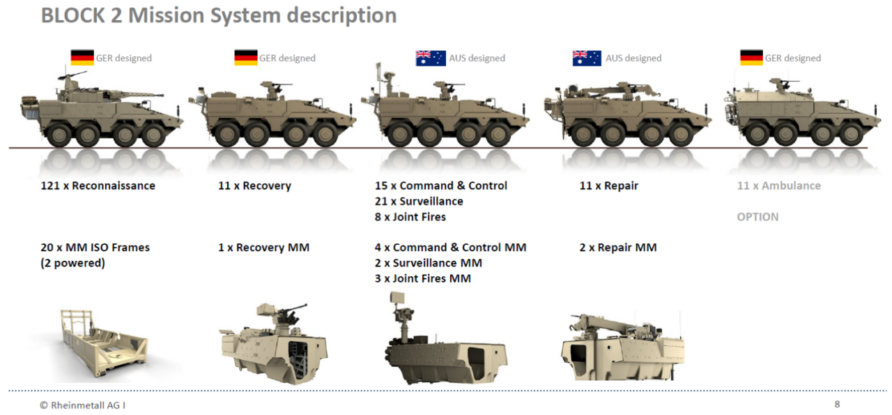
Mounted Close Combat Overwatch (MCCO)
In May 2021, the UK Defence Science and Technology Laboratory (DSTL) released details of the Army’s requirements for Battle Group Organic Anti-Armour (BGOAA). Briefly, it comprised;
- Close-In Self Defence (CISD): portable lightweight munitions carried by Infantry sections
- Mounted Close Combat Overwatch (MCCO): a long-range system providing anti-armour coverage to the battle group, with concepts carrying multiple missiles weighing up to 50 kg with a range of up to 10 km or more
- Close Combat Anti-Armour Weapons (CCAAW): Mounted and Dismounted, capable of destroying armoured vehicles even if hidden from view
MBDA responded with a Brimstone-armed version.
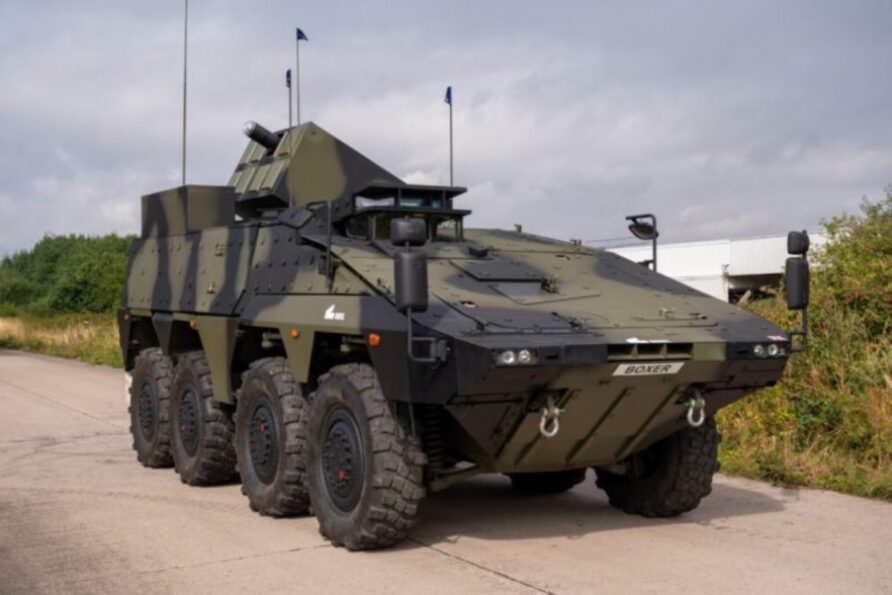
Hero Loitering Munitions and the Lockheed Martin JAGM are also proposed.
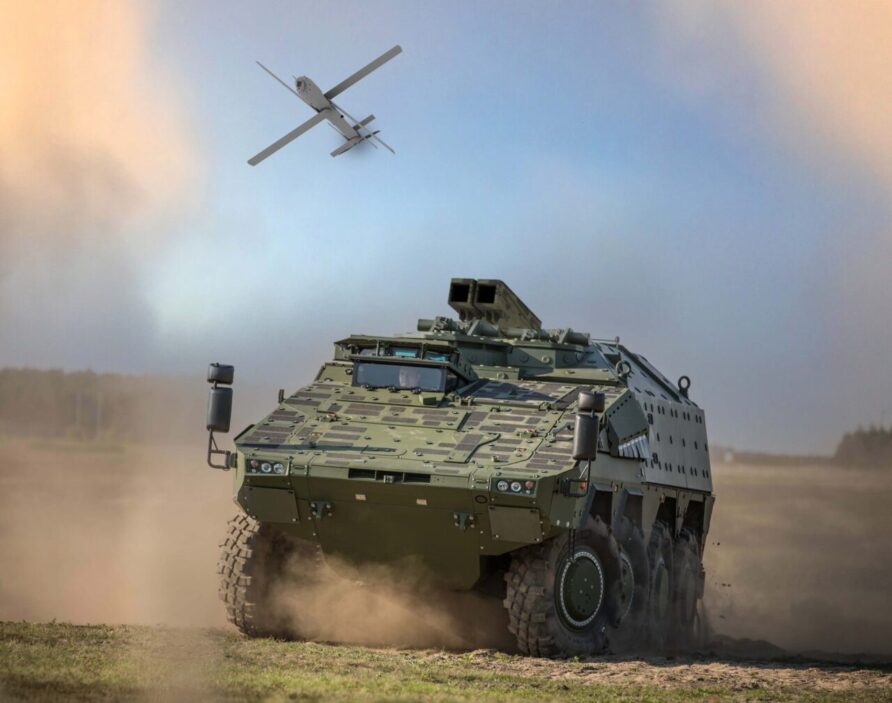
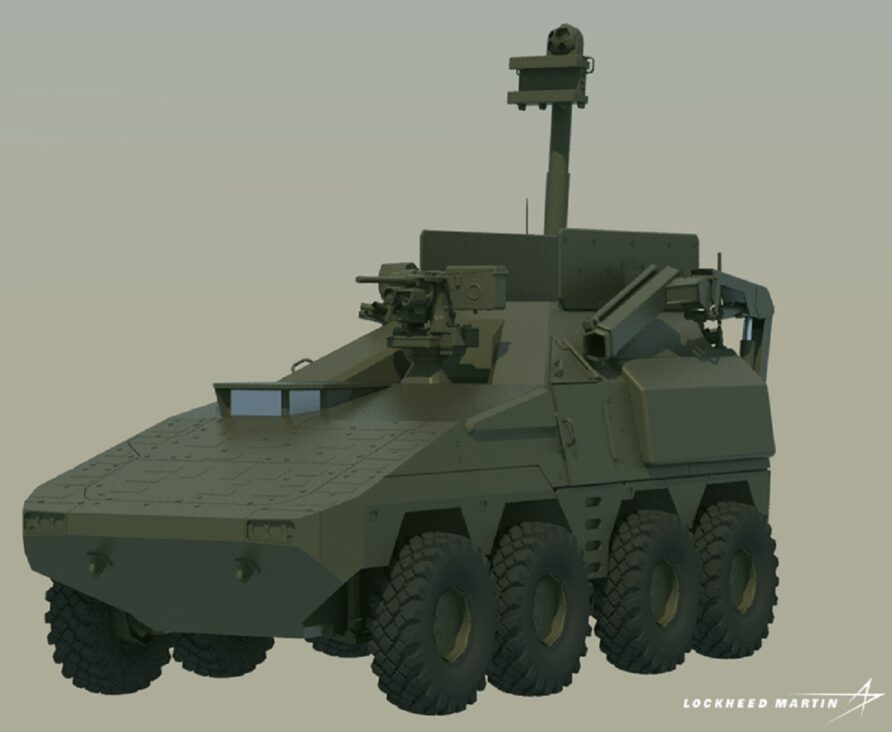
Air Defence and C-UAS
Although no air defence or counter UAS system has entered service on the Boxer vehicle, some manufacturers have either proposed or developed prototypes and demonstrators.
The Skyranger is a mature system based on a 35 mm revolver cannon.
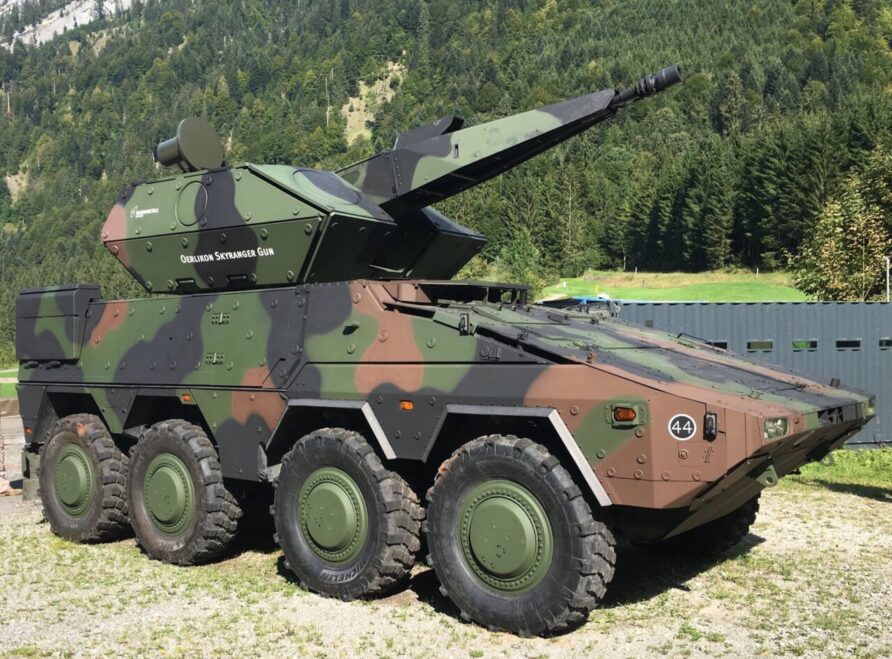
New versions of the well-established Skyranger turret have also been developed, the latest utilising a lighter turret with a 30 mm revolver cannon, AMMR (AESA Multi-Mission Radar) S-band radar, an optical-electronic station FIRST (Fast Infrared Search and Track) system, a High Energy Laser (HEL), and a twin missile launcher.
The uncrewed turret weighs much less (2.5 tonnes) compared to that shown above (4.5 tonnes)
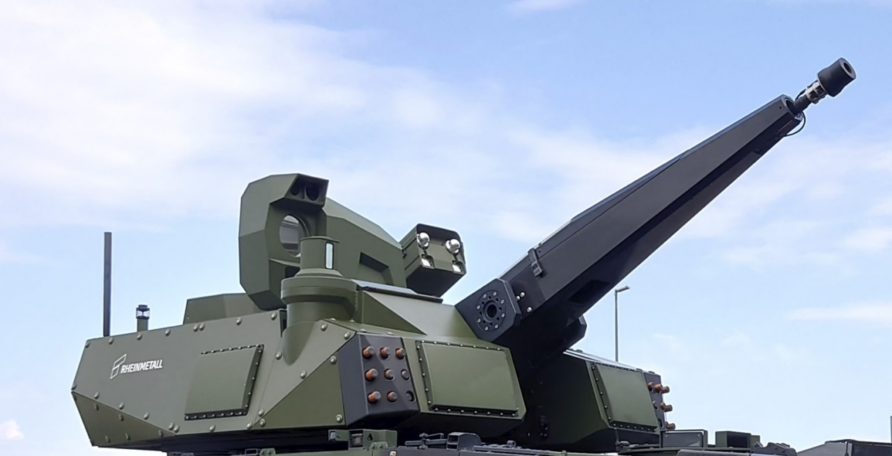
The radar system uses five flat antennae to provide 360-degree coverage with a detection range of 20km for small UAS.
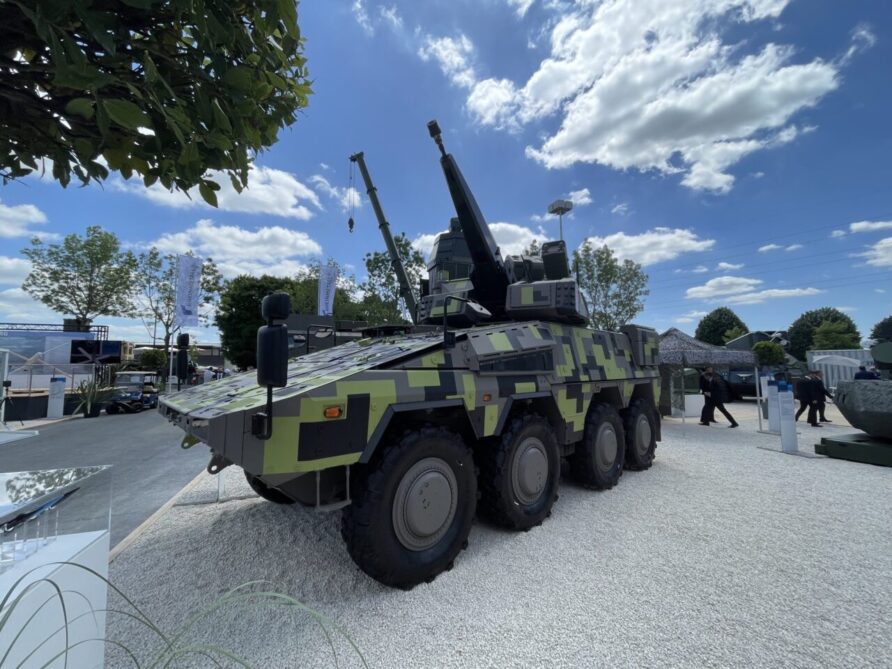
The effective range of the main gun is 3 km.
Missile-based systems have also been proposed using the RBS-70, MBDA Mistral, and IRIS-T
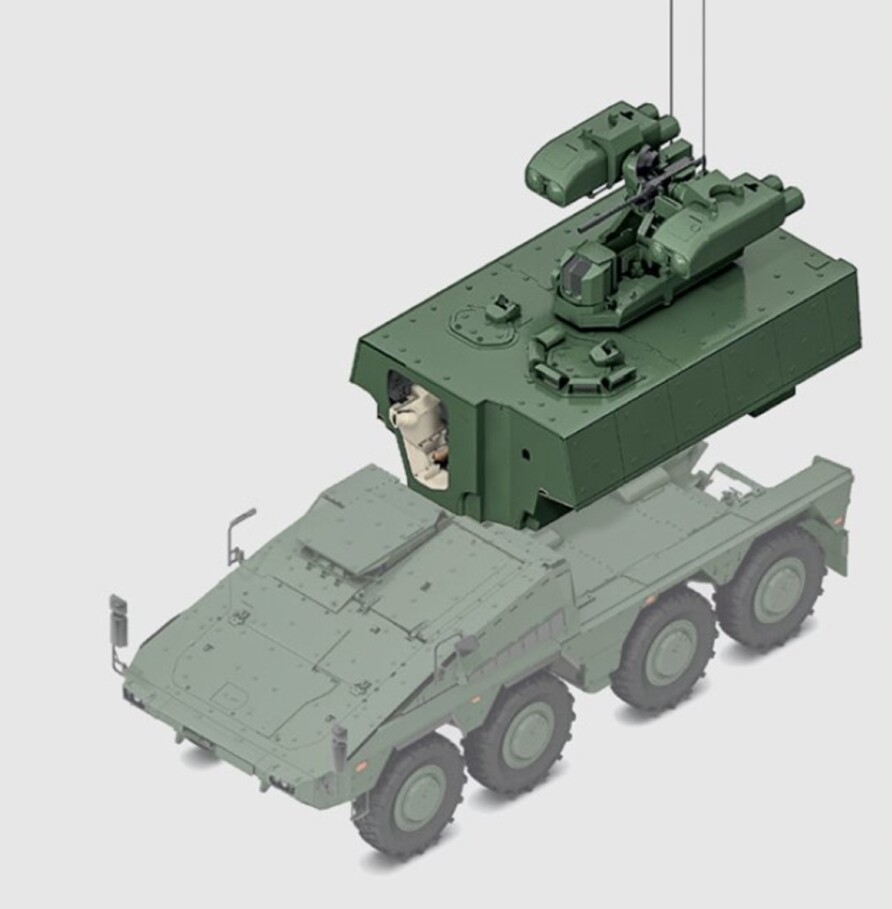
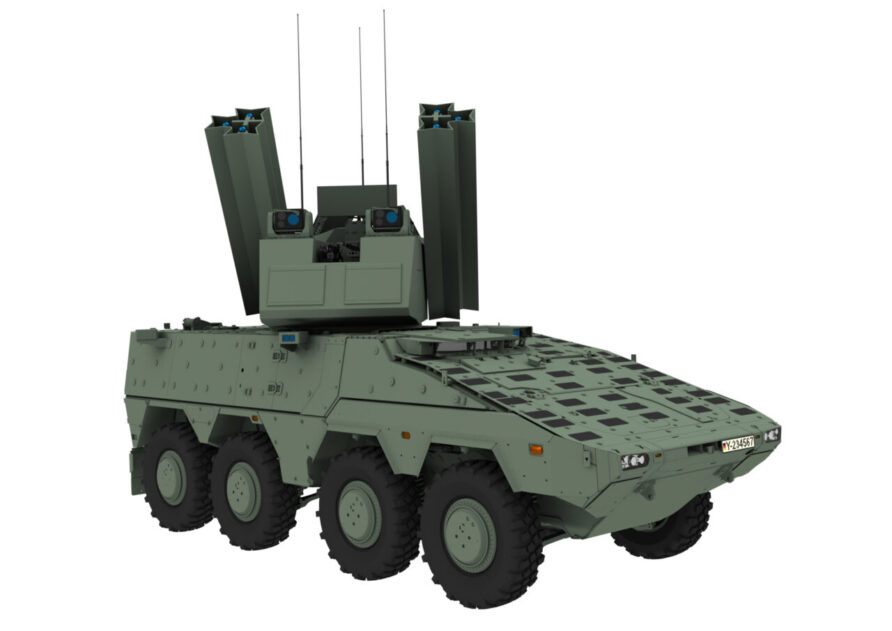
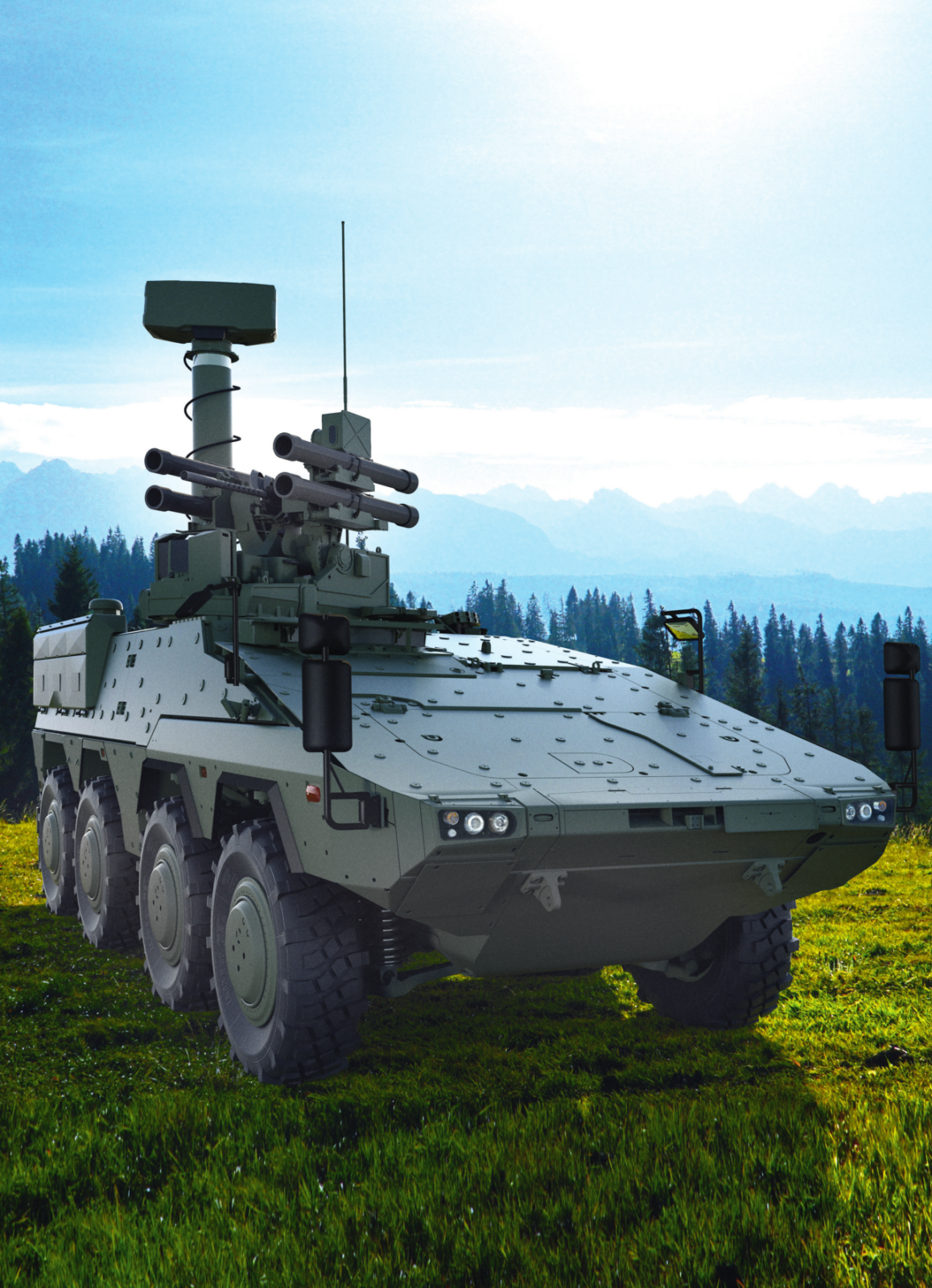
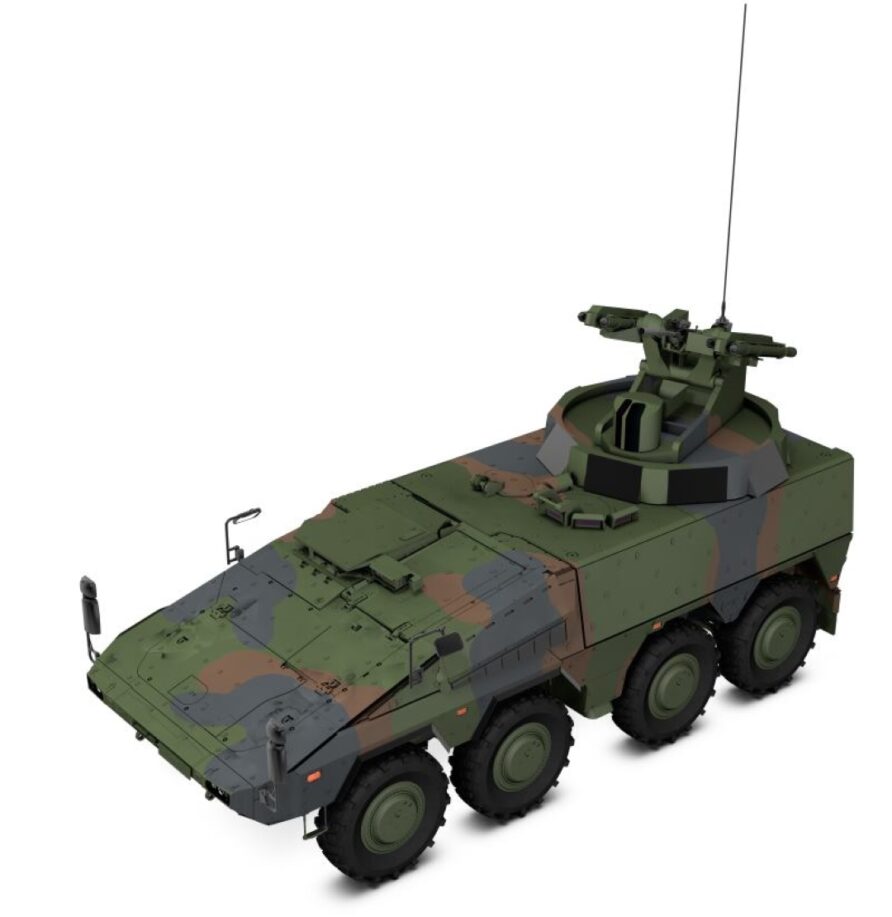
And of course, HVM Starstreak
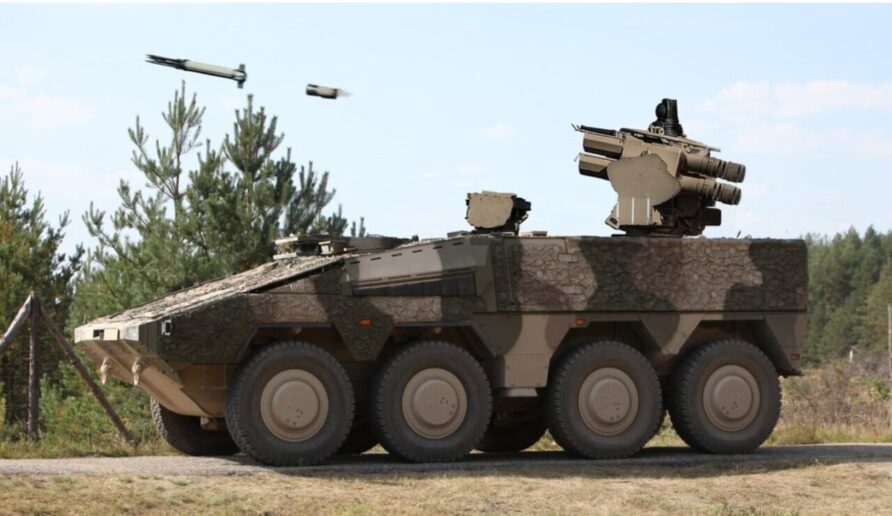
Valhalla Turrets also proposed their Nimrod RWS for the air defence role on Boxer
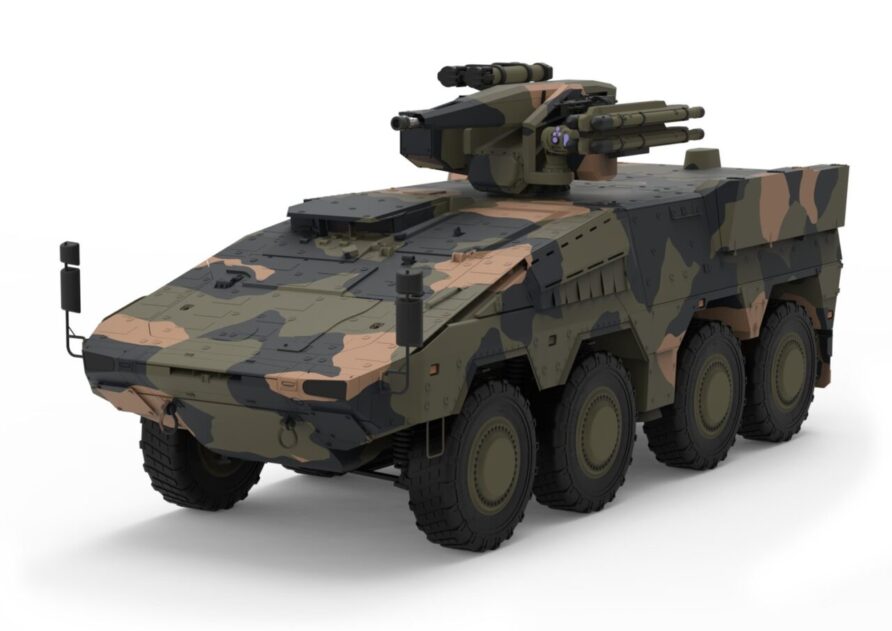
Hensoldt will go one step further with a recent order from the German army for 10 Spexer 2000 3D radar systems that will be integrated on Boxer and combined with a Kongsberg Protector RWS for counter UAS for their VJTF.
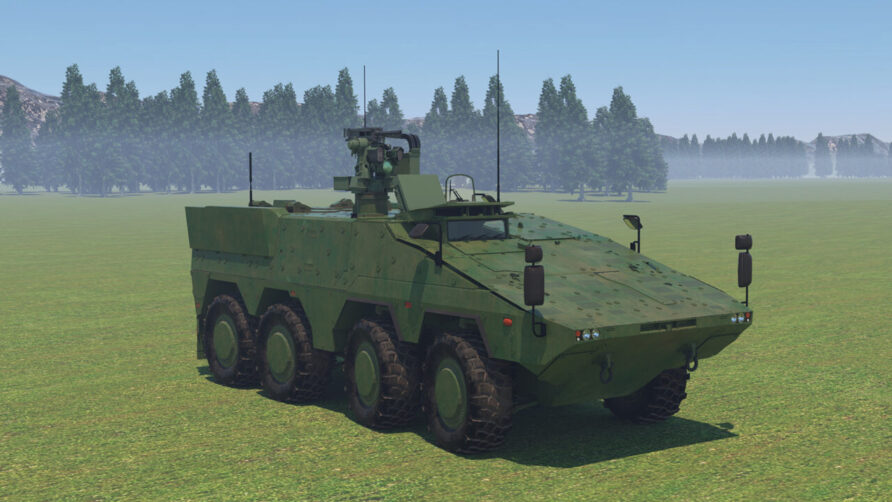
In 2013, Rheinmetall demonstrated a Boxer with a 5kw High-Energy Laser (HEL) module, this continues to be developed.
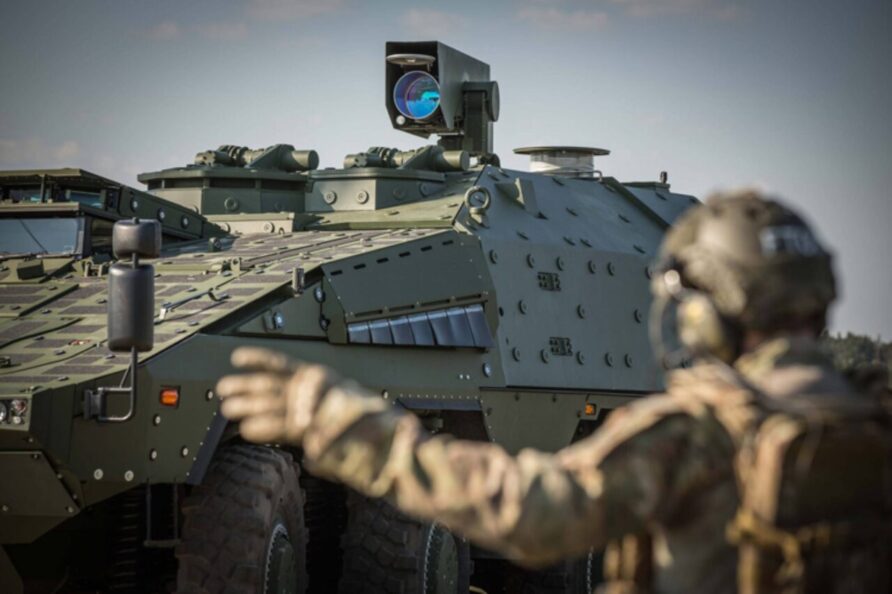
JODAA
A joint operational demonstrator for advanced applications (JODAA) is used for the operational development of new systems, manned/unmanned teaming and command and control.
UK Variants
Little had been publicly released early by the MoD about the role and module split for the 500 or so Boxers it has on order, this is not unusual for the MoD.
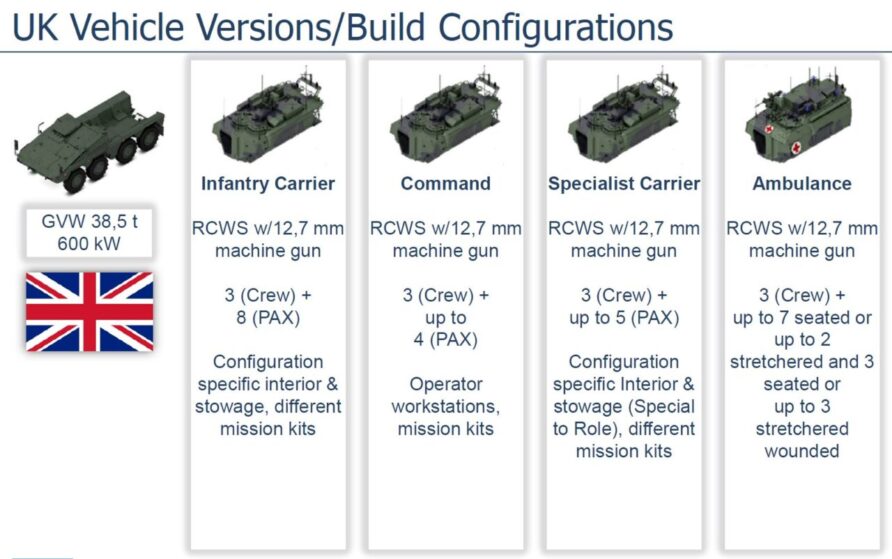
We know the UK variant will have the higher output 600kW MTU 8V 199 TE21 engine and the following variants/roles.
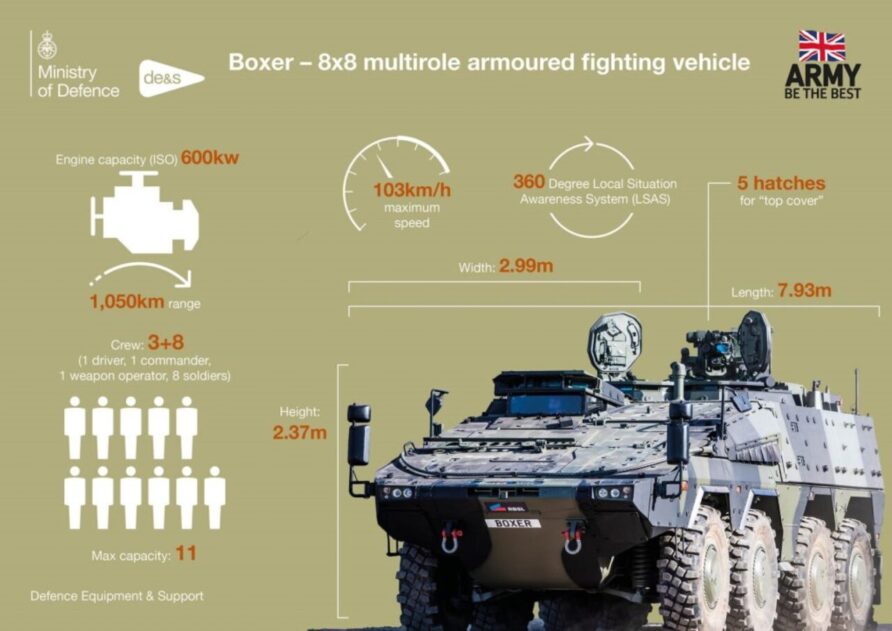
Some additional information was subsequently released on roles and variants but it was not clear if this would remain in future iterations of the Army organisation.
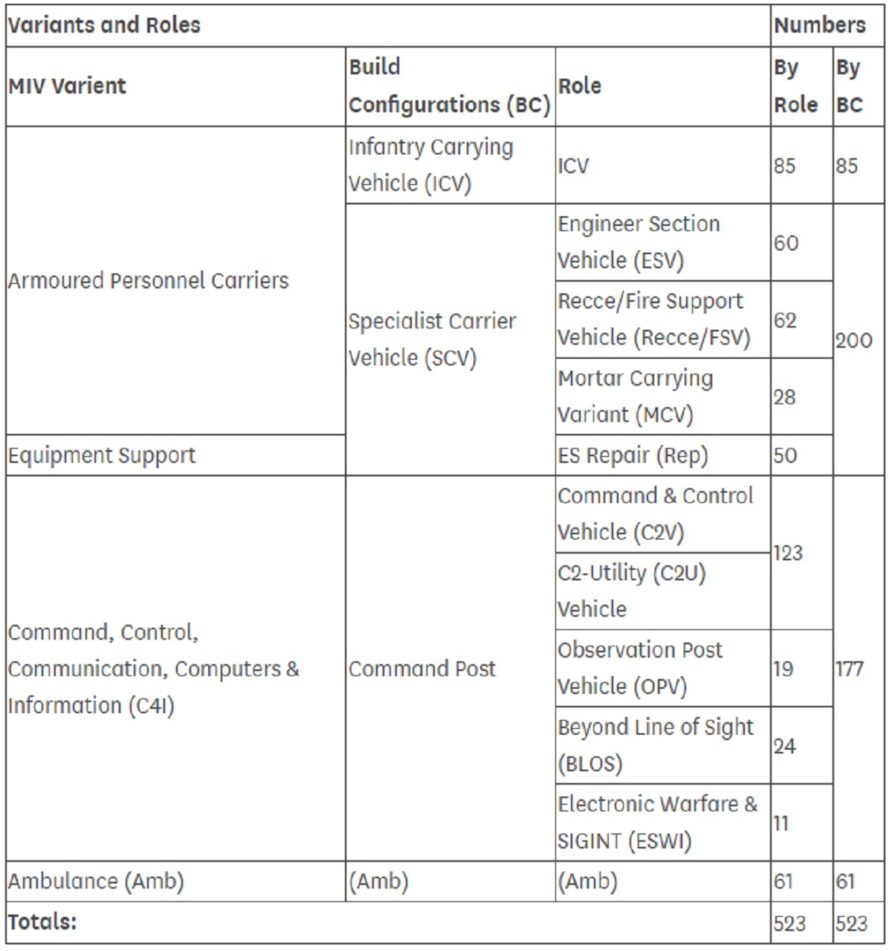
UK Boxer will be fitted with the Thales/Kongsberg Protector RS4 Remote Weapon System. Each will also include an acoustic shot detection system.
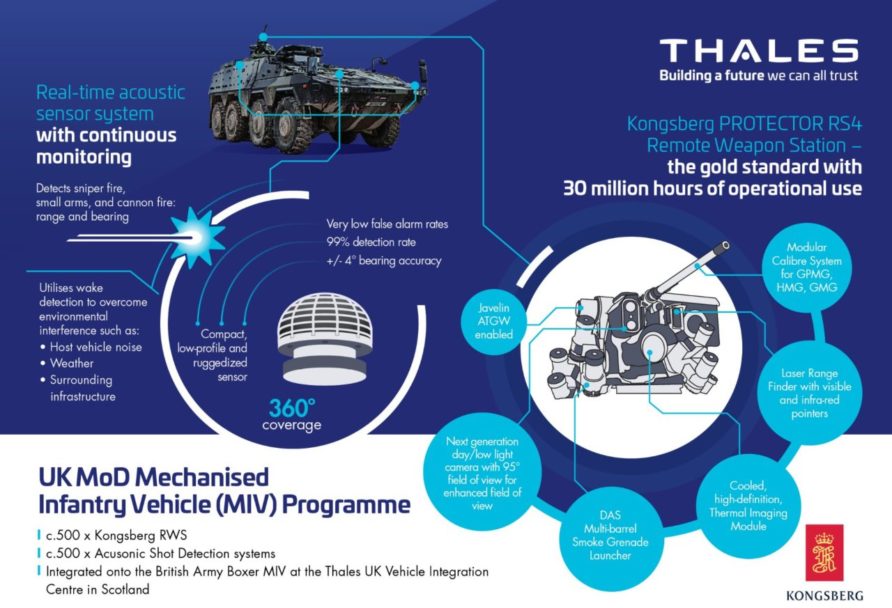
The RS4-J RWS includes the Thales Catherine-EZ thermal imager, Thales CELT3 laser rangefinder and Kongsberg VIS95 day camera.
Like the Dutch Boxers, UK vehicles will be fitted with the RFEL Trailblazer vision system
The British Army will receive the latest generation of RFEL’s Trailblazer solution on Boxer vehicles. It is designed for all weathers and light conditions, including hatches down driving. The system uses RFEL’s leading ‘Video Fusion’ technology which provides excellent coverage with ultra-wide field of views, giving unparalleled situational awareness whilst offering a small physical footprint and simple platform integration. A software-defined capability ensures the camera modules can be updated with product enhancements, keeping step with customer requirements and ensuring longevity of service. The system is also fully-GVA (Generic Vehicle Architecture) compliant, supporting multiple views for the driver and crew.
MilDef will provide the ruggedised electronics and computing equipment for UK Boxers.
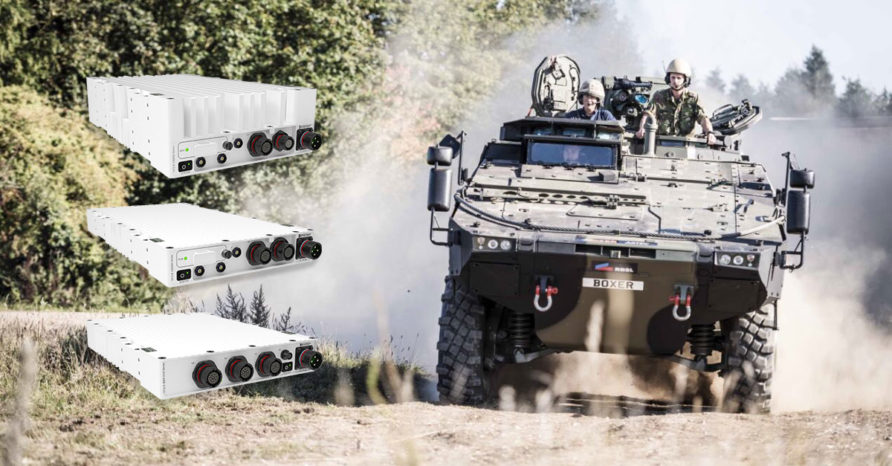
Change Status
| Change Date | Record |
|---|---|
| 29/03/2017 | Initial issue |
| 25/09/2020 | Update to reflect more information available |
| 23/07/2021 | Update and format refresh |
| 26/10/2022 | Update |
Discover more from Think Defence
Subscribe to get the latest posts sent to your email.


